The Basics of Bullfighting
- AMCL Schatz
- Jul 30, 2023
- 7 min read
We left the sports bar after half an hour and proceeded to our main destination – La Plaza de Toros de las Ventas del Espiritu Santo, or simply, Las Ventas, Madrid’s main bullring.
The impressive Mudejar-style building is made of red bricks and ceramic tiles, making it stand out from the rest of the structures around it. We did not have to line up, since we already purchased our tickets from the tour company. The only thing our guide did was to give instructions on who goes where.
The bullring is divided into a group of zones called patios. Seating capacity is divided into ten tendidos, or groups of 27 rows around the arena. Our seats were situated in the middle area, but some of us purchased tickets for seats on the “sunny” side, and some on the “shady” side. I sure was glad I purchased a “shady” ticket. Even though it was already seven o’clock, the summer sun was still high up and its setting rays were directly aimed at the “sunny” seats, creating an uncomfortable glare. I felt bad for my companions who had to watch the entire bullfight wearing sunglasses.
Our guide made sure we noticed the “royal box” located in the tenth tendido, where the President of the corrida (bullfight), the important person who directs and judges the fight through the use of different-coloured handkerchiefs, sits. The tendido has elaborate Mudejar features and is equipped with a washroom and a small elevator. On the opposite side of the covered grandstand, is the clock.
The arena was only half-full, perhaps due to the fact that this was just a novilladas (novices) fight, or maybe because the Feria de San Isidro (St. Isidore’s Fair), feast of Madrid’s patron saint, is over. It’s the series of bullfights that occur from May 11th and the next 20 days that are extremely important and popular. It is that season, when the best matadores are in town for the fights, that attracts the most avid bullfighting fans. But since I am not familiar with the sport and its rules, I was actually happy that there was not a huge crowd. All I wanted was to experience it.
As I waited for the show to begin, I read the handout that was given to us at the gate. Apparently, a corrida normally lasts for two hours and a normal fighting involves three matadores (the ones whose job is to actually kill the bull) with their respective troupes. You can distinguish them from the rest because of the traje de luces (suits of lights) braided in gold that they typically wear. There are six bulls, two for each fighter, and the matadores take turns in directing a 15-minute session with the bull known as the faena.
There are three parts to this faena. The first, called tercio de varras involves the matador receiving the bull with his large cape. This is the first time he judges the bull’s strength and courage.
The second part is called the tercio de banderillas, where picadores (fighters on horseback) use long lances to weaken the bull’s neck muscles and banderilleros (fighters holding brightly-coloured barbed sticks called banderillas), stab the back of the bull. This stage is a further test of the bull’s courage, depending on its willingness to approach the horses.
The third and final part, called tercio de muerte, involves only the matador, the part that most people are familiar with. Holding a small red cape, he attempts to pass the bull as close to him as possible. This is where you see and appreciate the artistic side of bullfighting – through the matador’s smooth and deft movements, almost like a dance routine. This is concluded by the matador taking a sharp sword and attempting to kill the bull by getting it as close to him as possible with its head lowered so he can thrust the sword between the bull’s shoulder blades. I cringed just reading the descriptions. It sounded savage and cruel to me. Poor bulls!
The fight is judged by the public – with applauses, whistles, cheers, hollers, “boos”, or dead silence. But the ultimate award is waving white handkerchiefs until the corrida President presents both of the bull’s ears to the matador. If a matador receives two of this coveted prize in a single afternoon, he is lifted up onto somebody’s shoulders and carried out of the ring through the main gate, which is symbolic of opening the Puerta Grande. This is the maximum accolade for any fighter.
I soon heard some band music signaling the start of the show. This opening parade, called paseillo, is the public presentation of the matadores and their team to the audience. First in line were the alguacilillos dressed in 17th-century costumes sitting regally atop their horses. In the olden days when there were no bullrings, these men were responsible for clearing the area where the fight will take place. Behind them were the three matadores, followed by the banderilleros, then the picadores. Apparently, their marching position in the parade is based on seniority and the order by which the matador they are supporting are fighting. At the very end are the mozos de caballos (horsemen) and the areneros (those responsible for cleaning and keeping the bullring sand in good condition), followed by the mules (that bring the dead bulls out of the arena) and the mulilleros (the men who tend these mules).
They circled the ring and stopped in front of the tendido to salute the President. When the music stopped, a bugle was blown to announce the beginning of the first fight. Then, the President waved a white handkerchief to signal the entrance of the first bull into the ring.
In the beginning, I was fascinated by the rituals involved in the fighting, as well as the grace of the fighter’s movements. But as it became evident that the bull was being defeated, I stopped romanticizing the fight that was happening before me. I witnessed a certain element of brutality and violence…and saw a lot of blood. And since this was a novilladas fight, I became aware that the bull was no more than four years old. The poor baby! Of course, I also feared for the fighters’ lives, but nothing can beat seeing a young bull being poked, stabbed, and pierced to a slow death. It was like torture happening before my eyes.
When the bull finally succumbed to his fatal injuries, he dropped dead and the avid fans cheered and screamed, “Ole!” while waving their handkerchiefs. I couldn’t bring myself to join the fanfare. I was feeling a little emotional. And then, they had to drag the dead baby bull around the ring to the tune of the marching band before it was brought out of the ring. Oh my!
I had not even recovered when the second bull entered the ring. Another fight commenced and I witnessed the same thing. I did not notice that I was actually covering my eyes with my hands and had stopped filming and taking photos. The two Australian ladies sitting beside me were equally distressed. At the end of the match, which of course, the baby bull lost, the three of us decided we had enough. We stood up and decided to go outside. We told the American couple sitting behind us that we would not be watching the remaining four matches anymore and that we would meet them at the parking lot when this was all over. They gave us understanding nods. I noticed they had stopped eating their hotdogs and fries and were just staring at the pool of blood left by the dead bulls.
Outside, we were happy to discover that our bus was already there, but since it was not time to leave yet, the bus driver apologetically told us he was not allowed to start the engine to let us sit comfortably in the air-conditioned bus. We said it was fine. It was hot, but there was a slight breeze and there were plenty of shady trees around.
My Australian pals and I found a bench underneath one of the bigger trees. We sat there talking about our experience. They told me they both grew up in the farm and this type of thing was unacceptable for them (They were initially reluctant to watch a bullfight but decided to do it anyway). I told them that I sort of expected to see a bull getting killed, just like in the movies, and that I bought a ticket to experience an authentic bullfight right here in Madrid, but I was not prepared to see all that blood and gore. I also confessed that I am not a huge animal person (in the sense that I cannot commit to take care of pets in the house), but that I do love animals and have a great compassion for them. Seeing the bulls die this way just broke my heart into little pieces. I did not expect this experience to bring me to near tears. It's different when you watch it on screen. The effect is more palpable when it is right in your face. Thus, I declared that I have ticked off “watching a real bullfight” from my bucket list and that I will never, ever do this again.
I recall that while in Barcelona, our Tour Director told us that bullfighting was officially banned in Catalonia in 2012 following a petition that garnered 180,000 signatures. That time, we were driving by a bullring which had been transformed into an air-conditioned mall. But over here in Madrid, the subject matter is still a controversial issue. The banning of the practice is strongly supported by animal rights activists and has gained the backing of celebrities from all over the world.
However, there are also those who are intent on preserving this cultural heritage and have joined the movement to revoke the ban in the Spanish Congress (and I heard that in 2016, the ban was annulled for being unconstitutional). Some even went as far as questioning the Catalans’ motives. They claimed it was driven more by political nationalism, rather than animal welfare.
I do understand both sides of the argument, but still, I couldn’t help but think of those poor animals. I must also say that this dangerous sport has harmed and killed even the most experienced matador. That is not good either.
After 15 minutes or so, we saw the Texan couple approaching our little party. They told us that after the third match, they left the ring and watched the fourth match from the concession area where they had TV monitors showing what was going on in the arena. "At least it was not an 'in-our-face' kind of thing," they said. But even this proved too much for them.
We spent the rest of our time outside taking pictures of the building and checking out its architectural features.
By the time the rest of our tour group came back at the end of the sixth match, we had somewhat recovered from the emotional impact of the fighting, but the bus ride back to downtown was enveloped in silence. I guess those who watched all six matches were deeply affected as well. No one dared to talk about it. Even our tour guide let us be.
Photo Credits:
mastertoro.com, makespain.com, minube.net





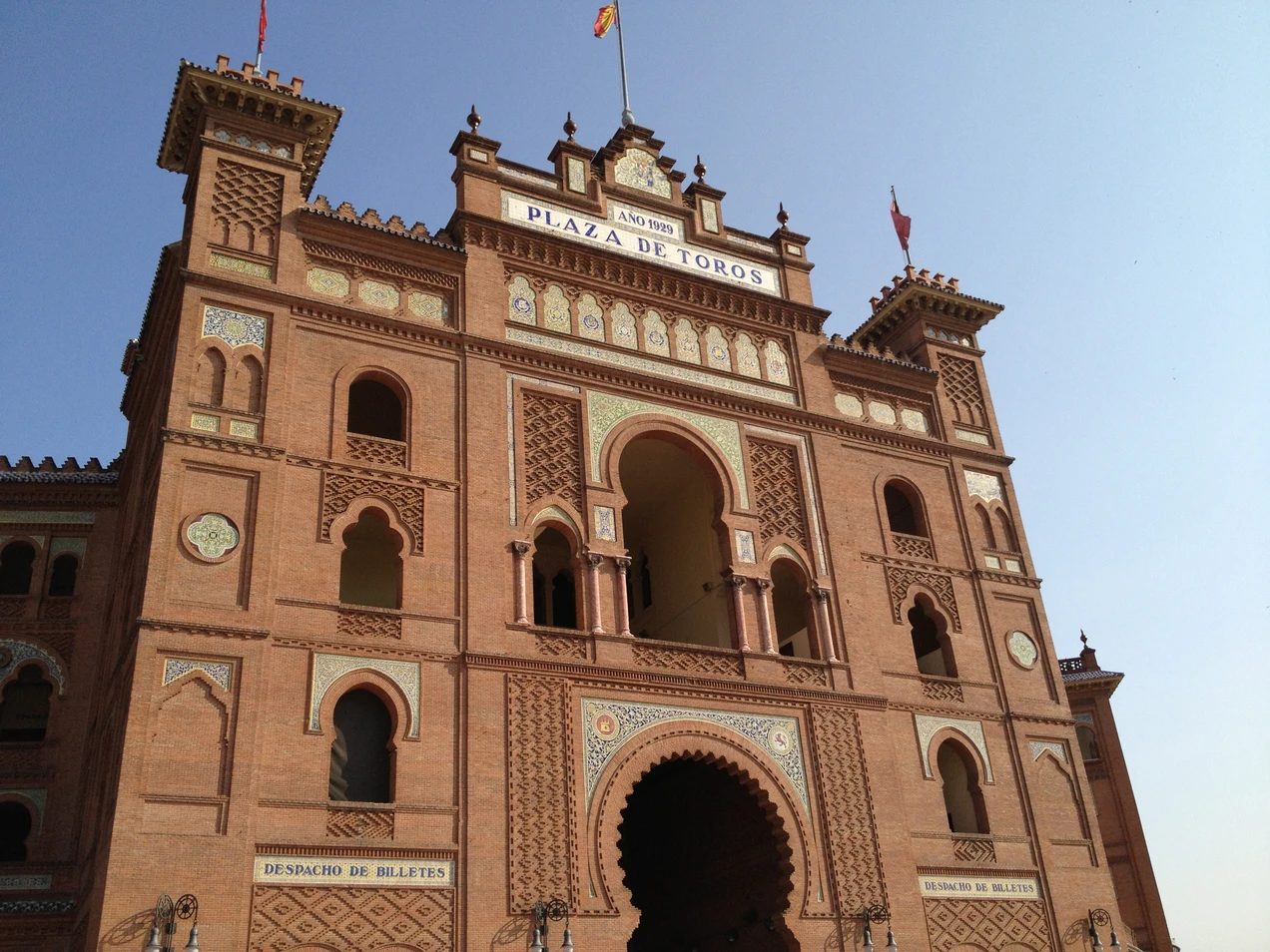
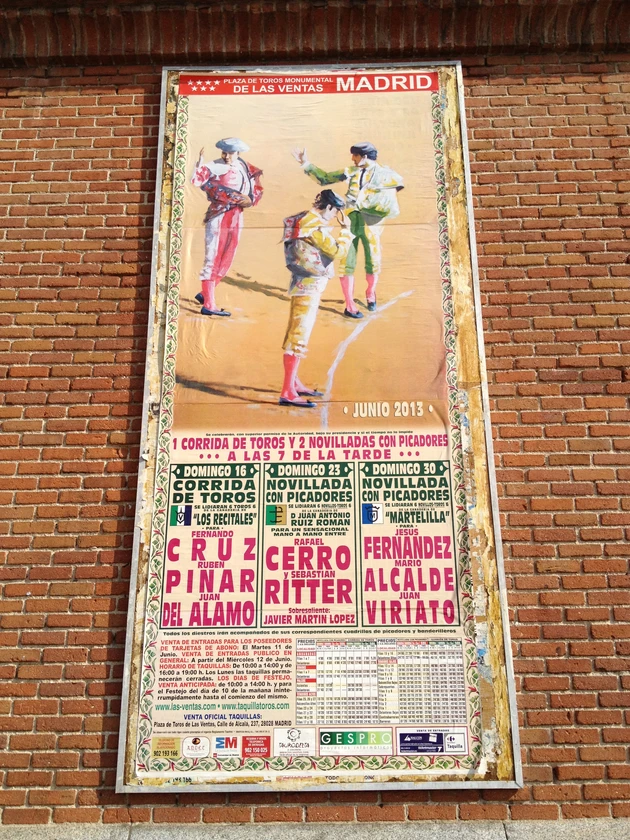




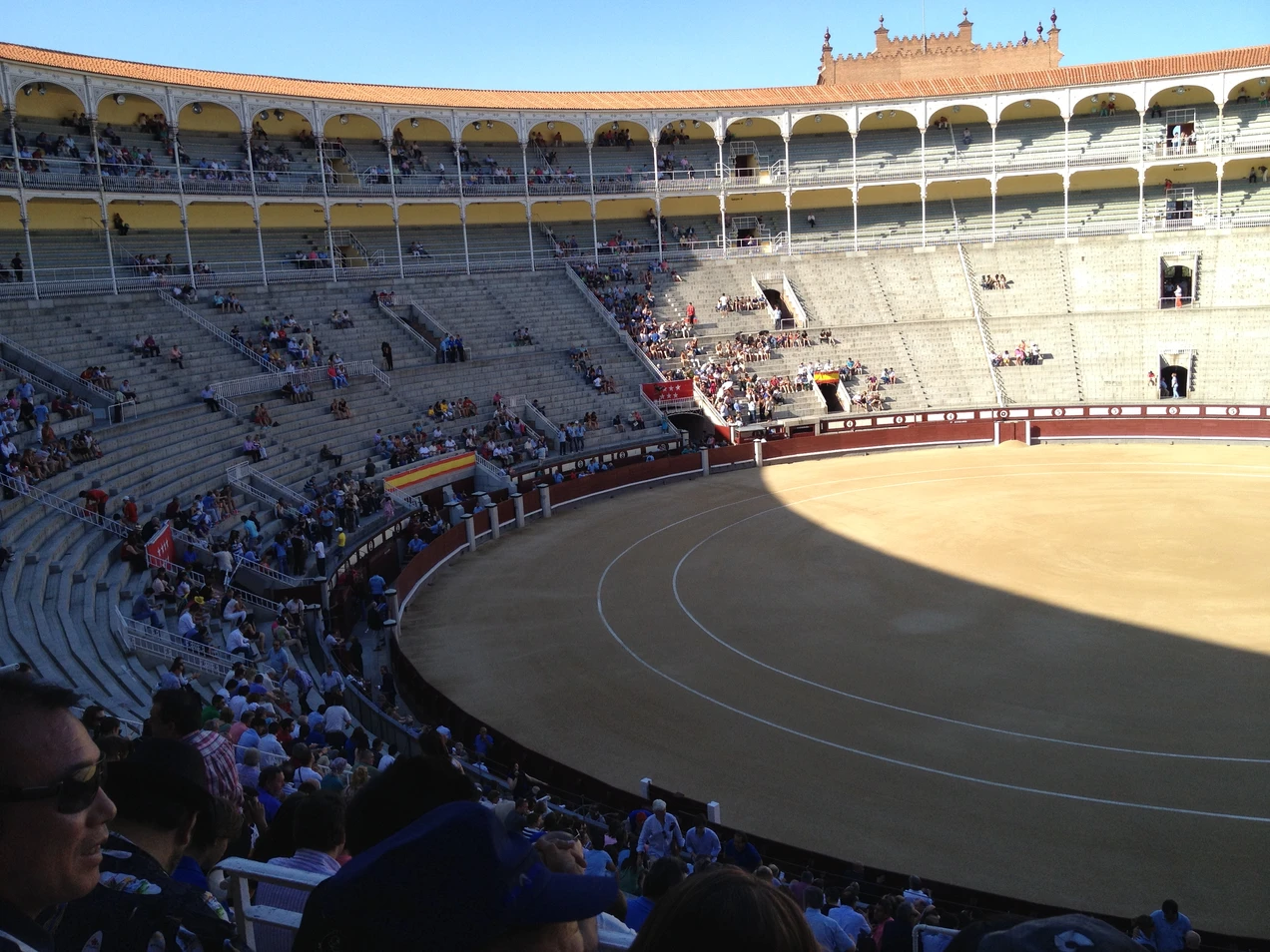

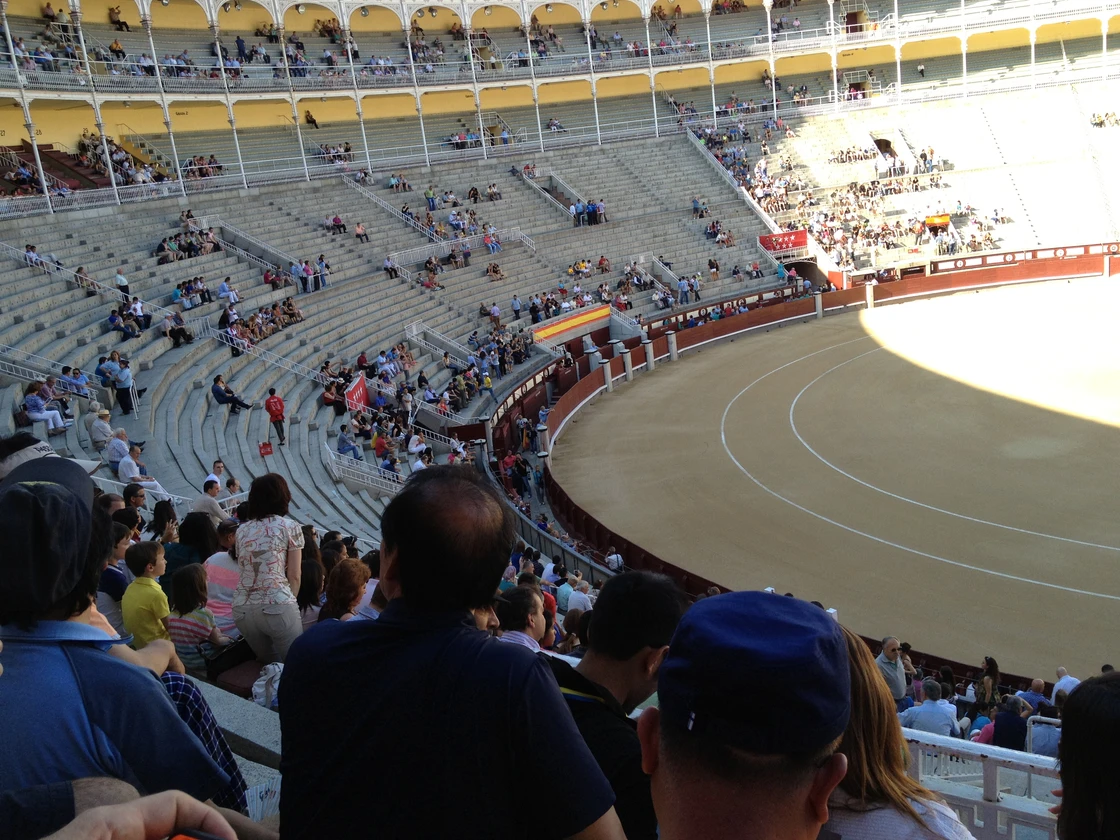
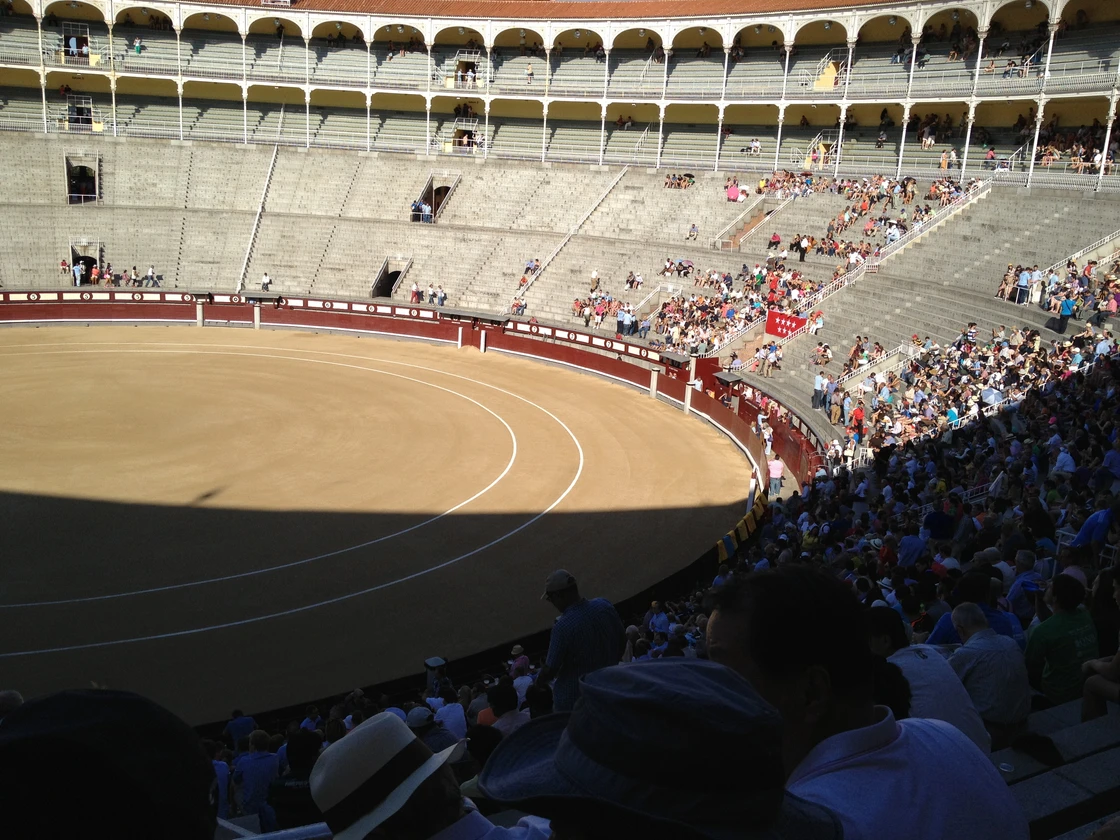
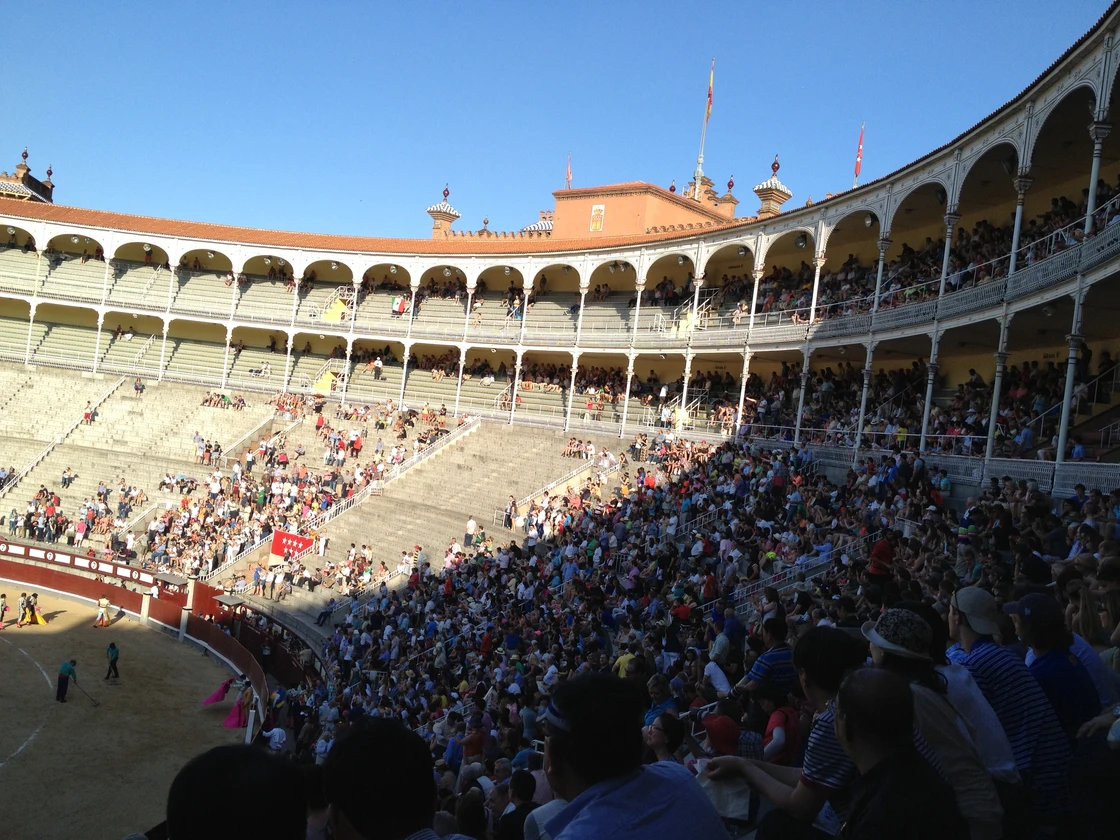


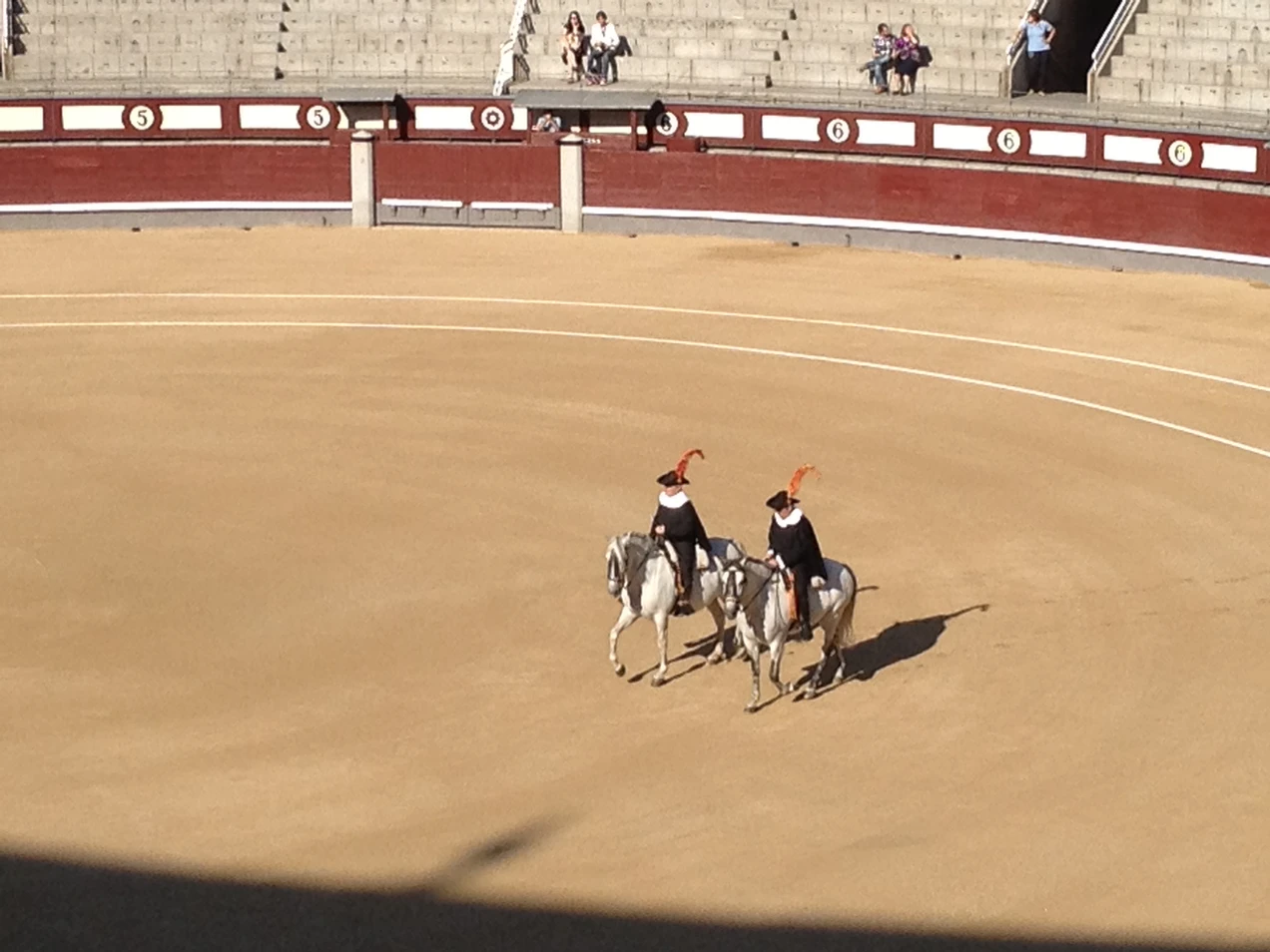
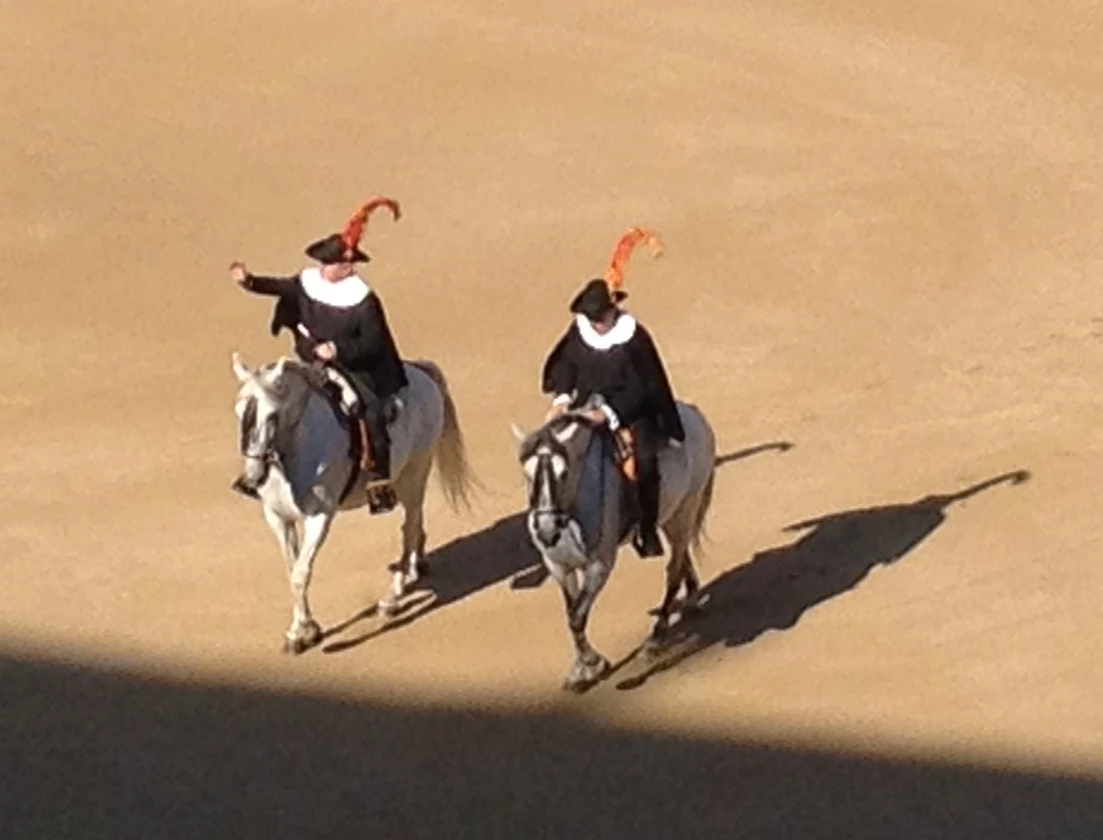

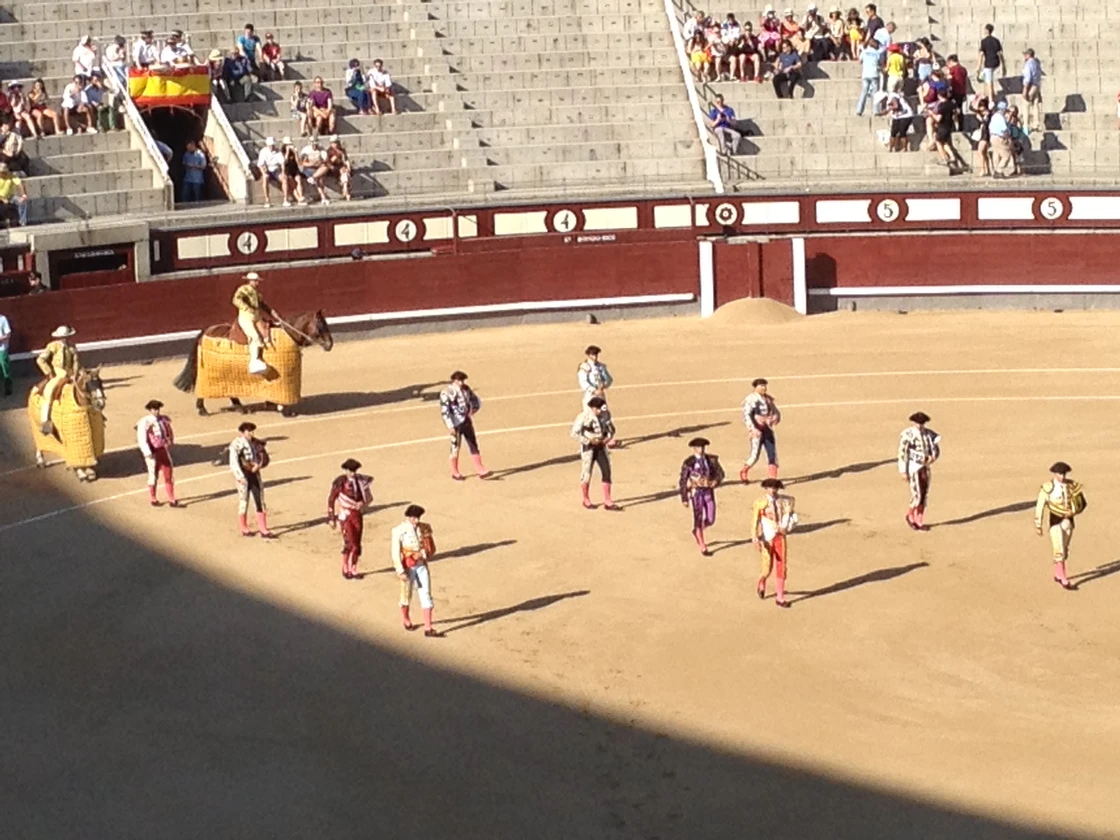
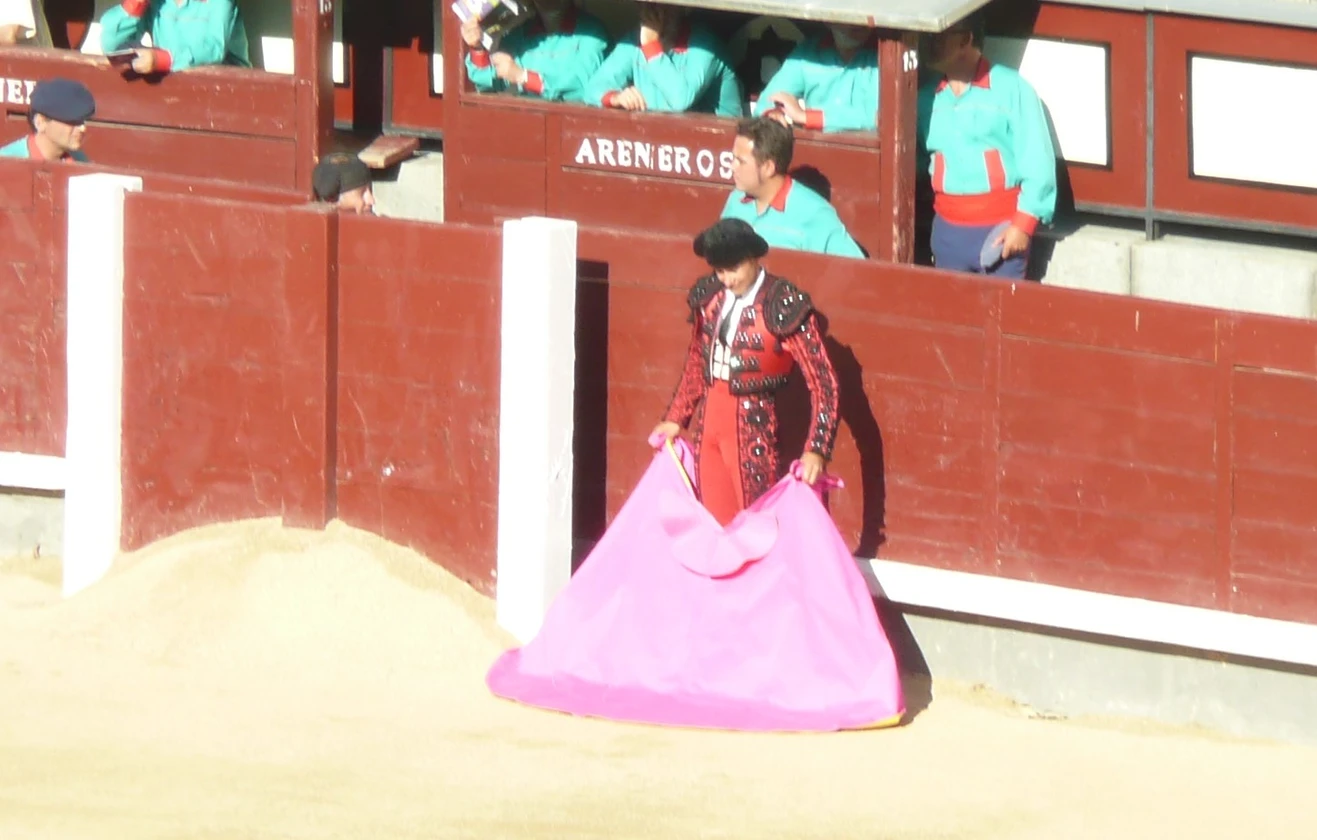
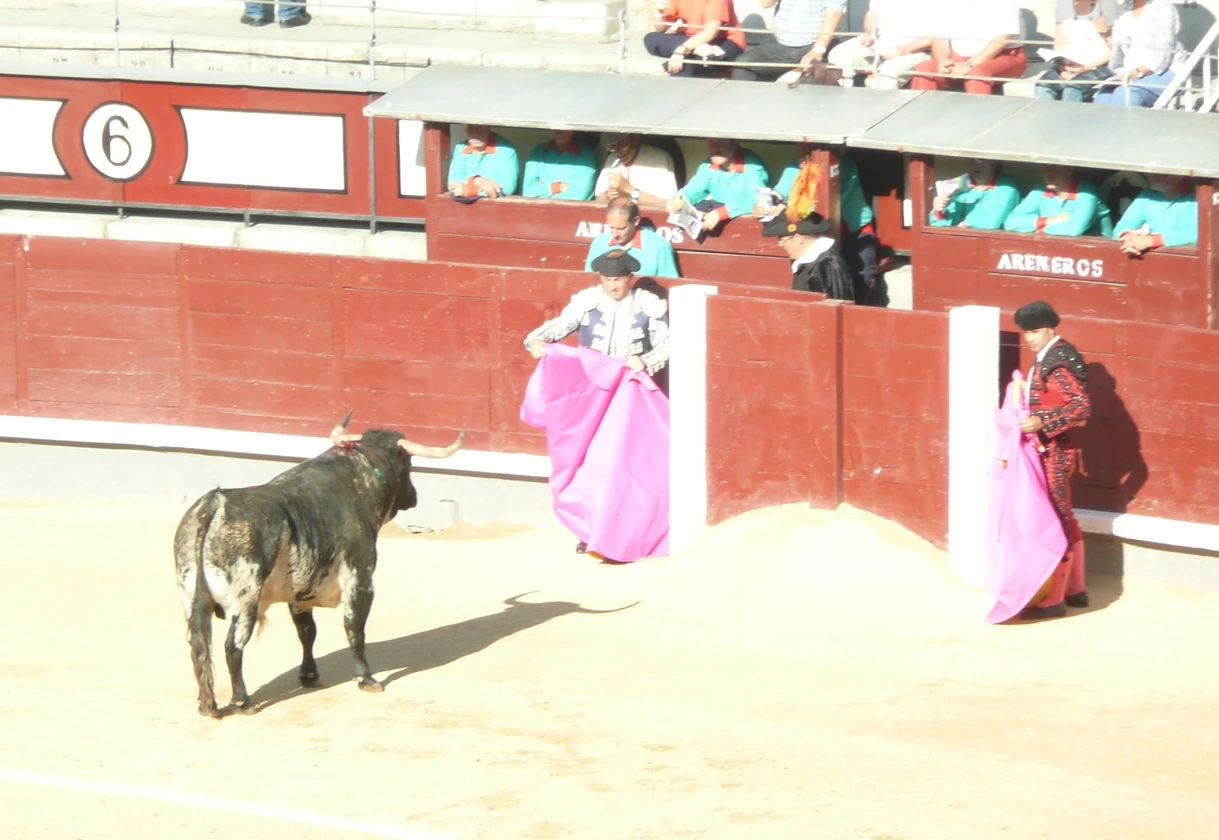
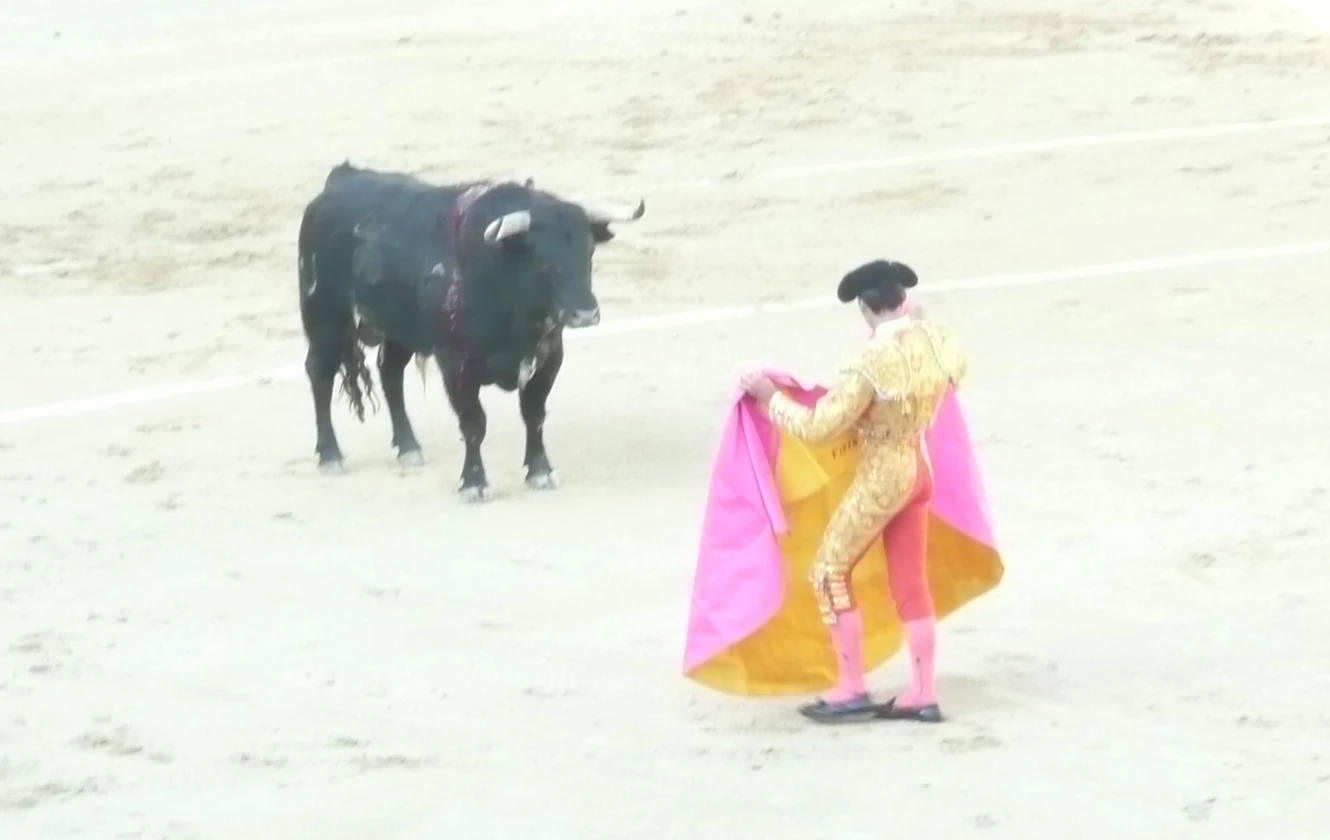



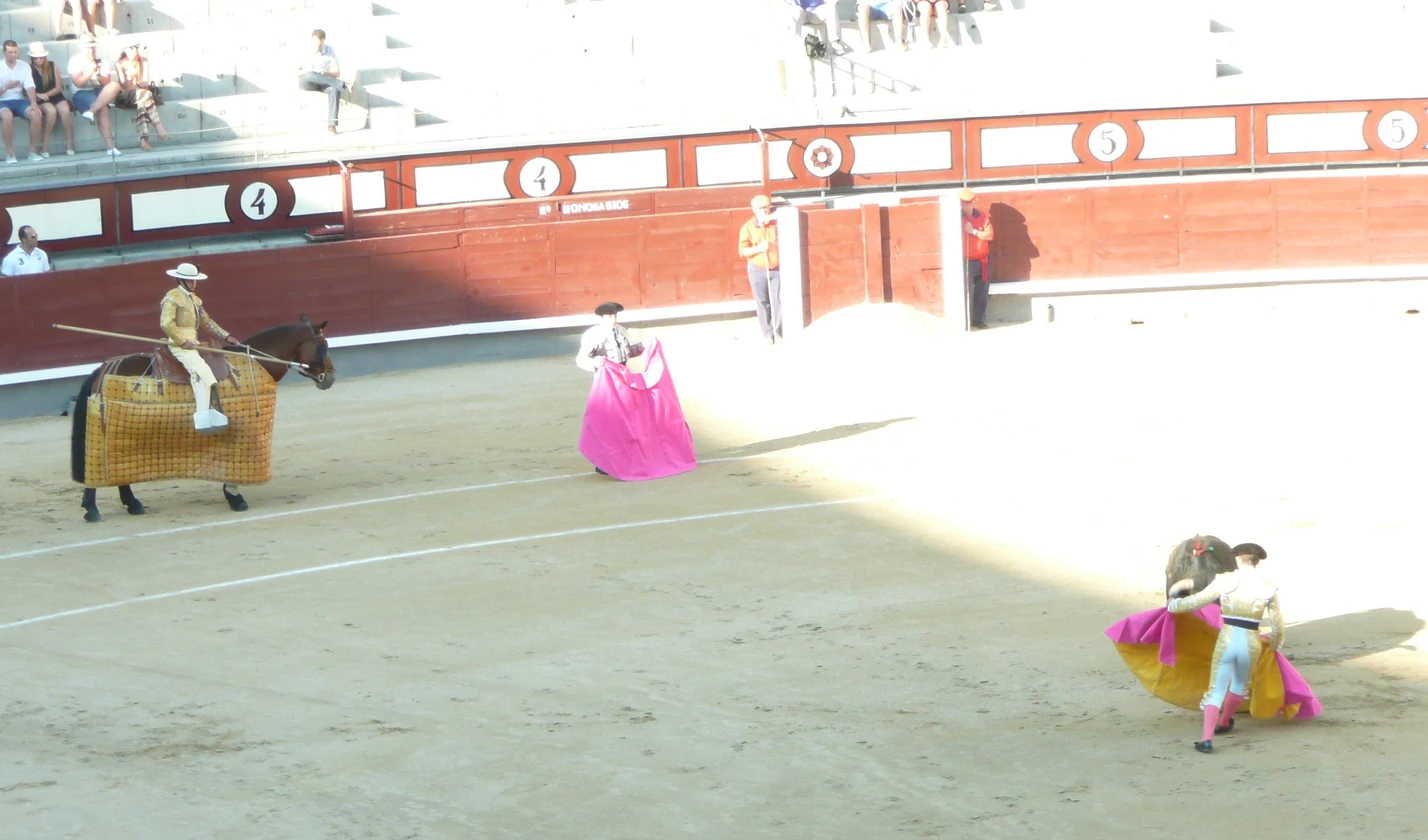
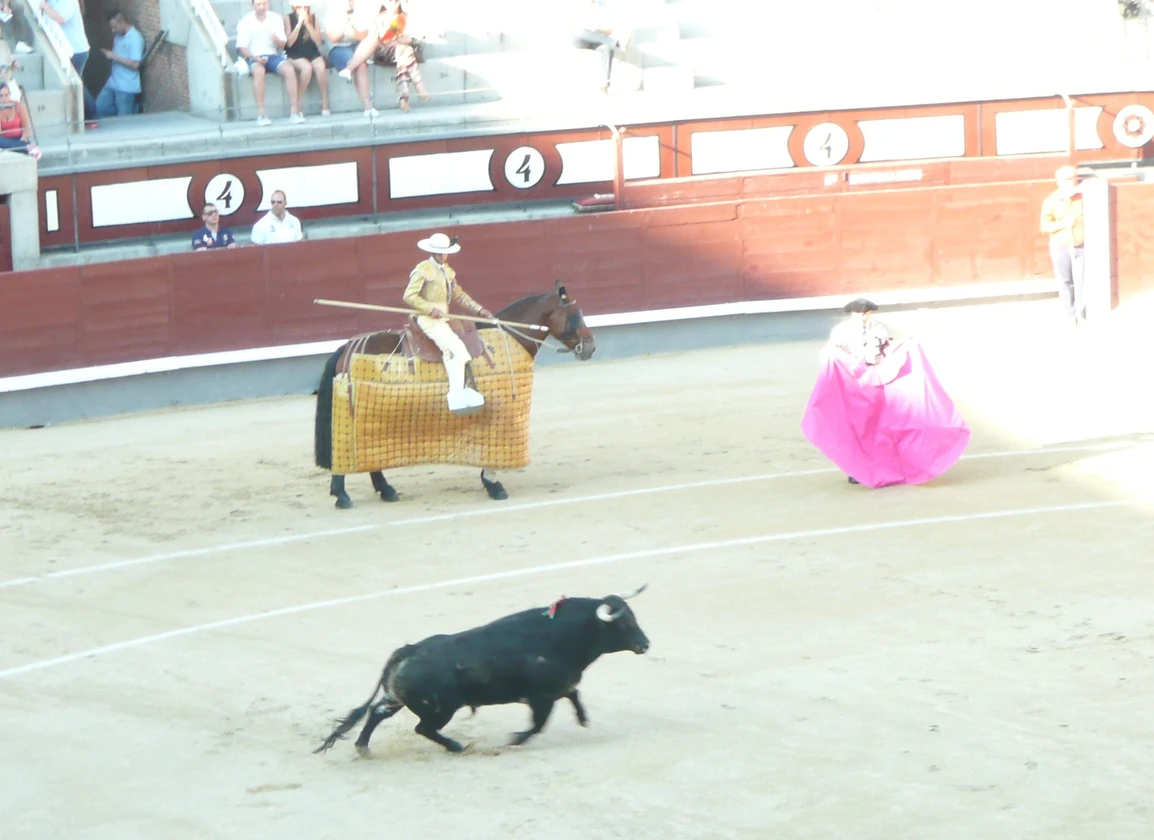
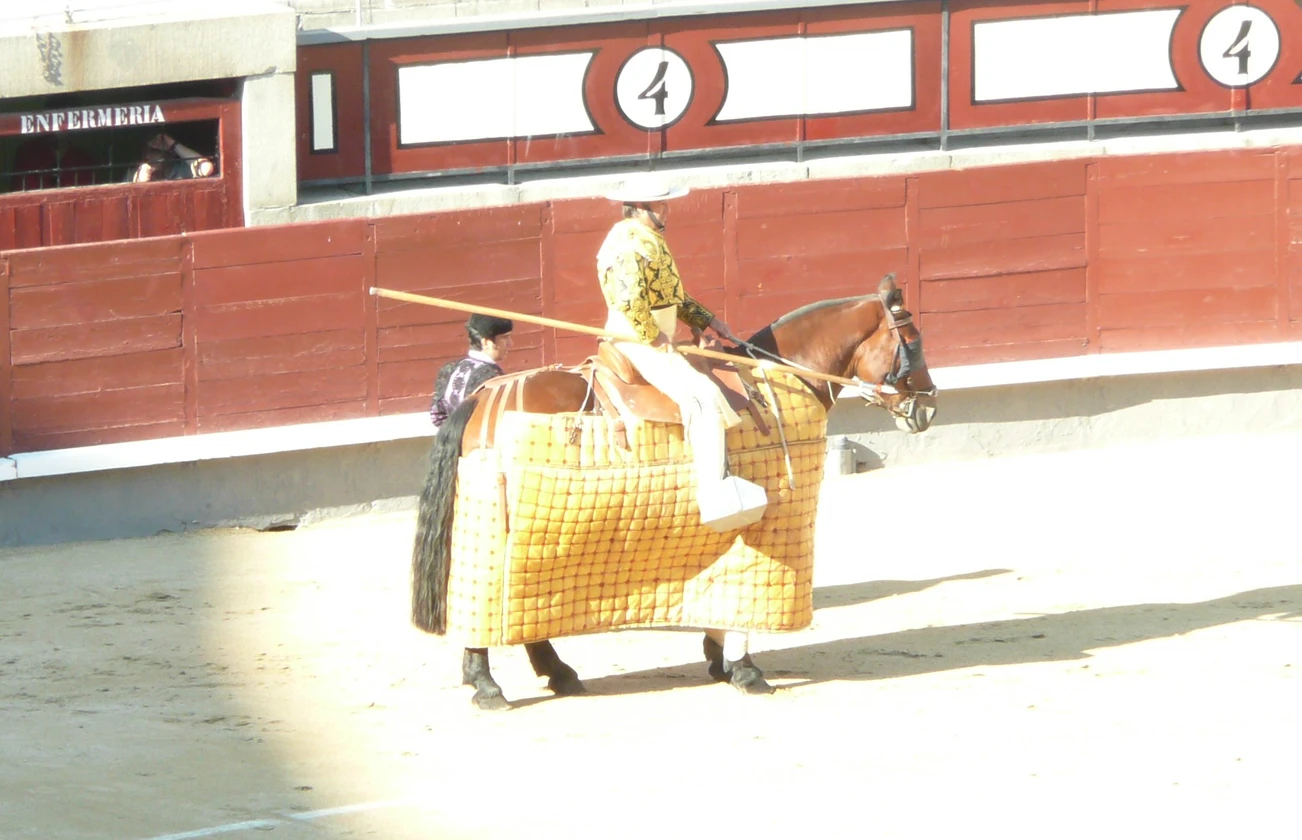
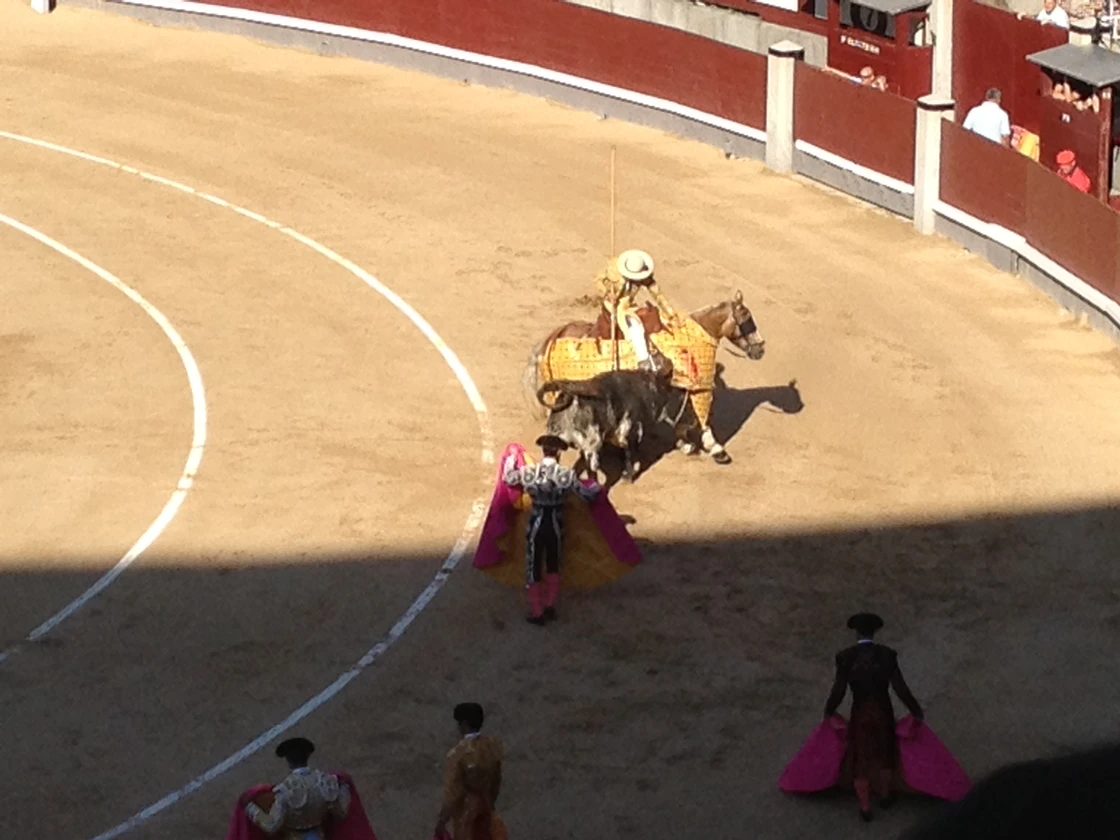
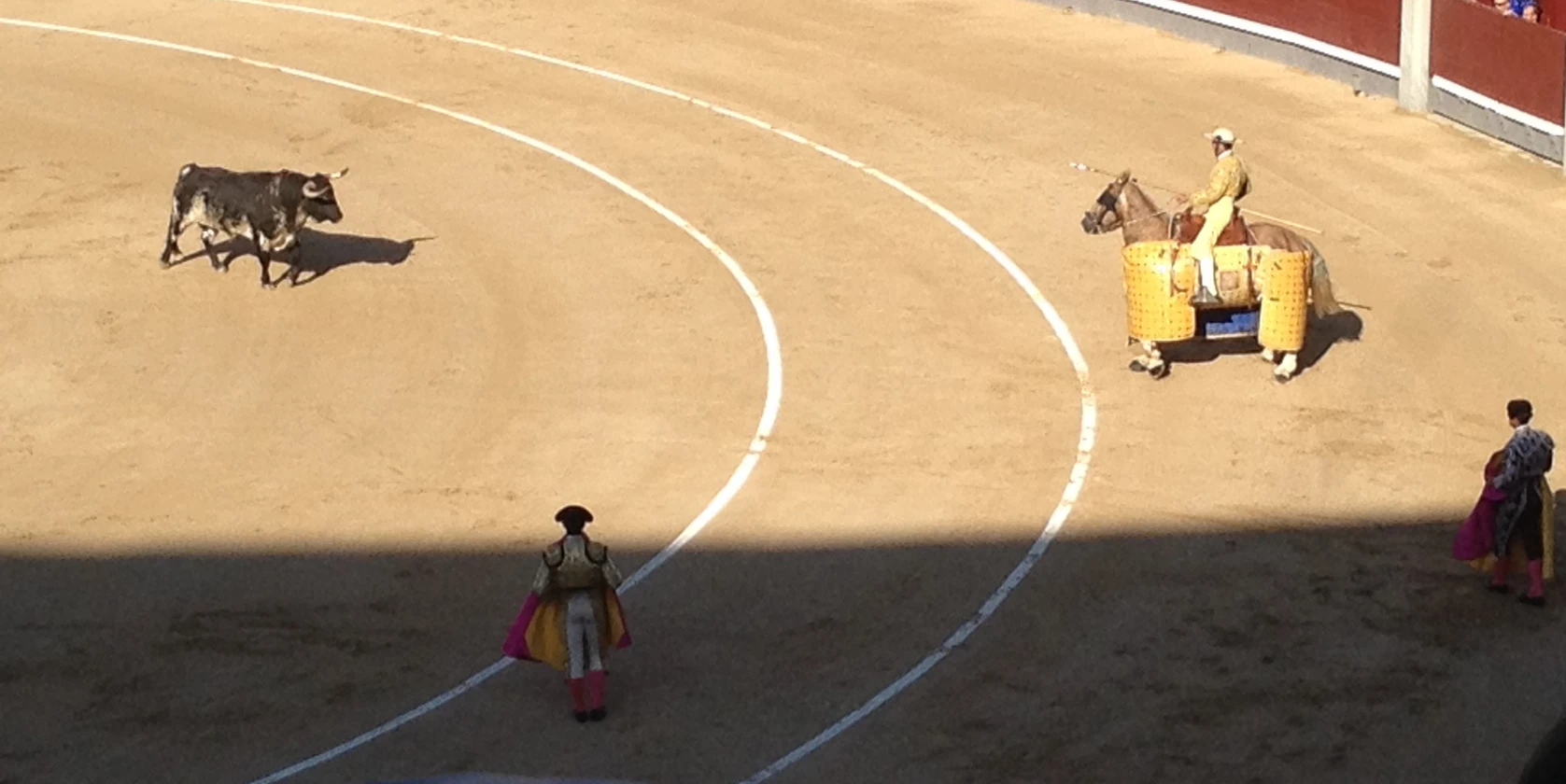
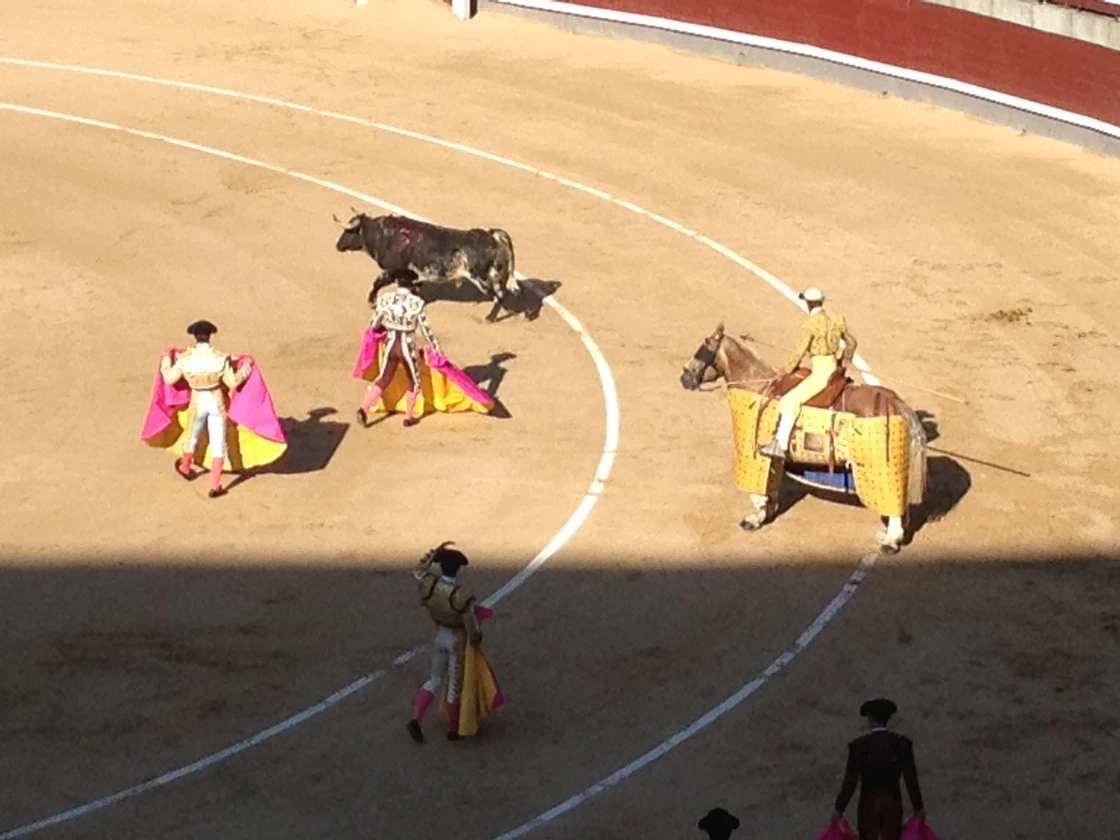
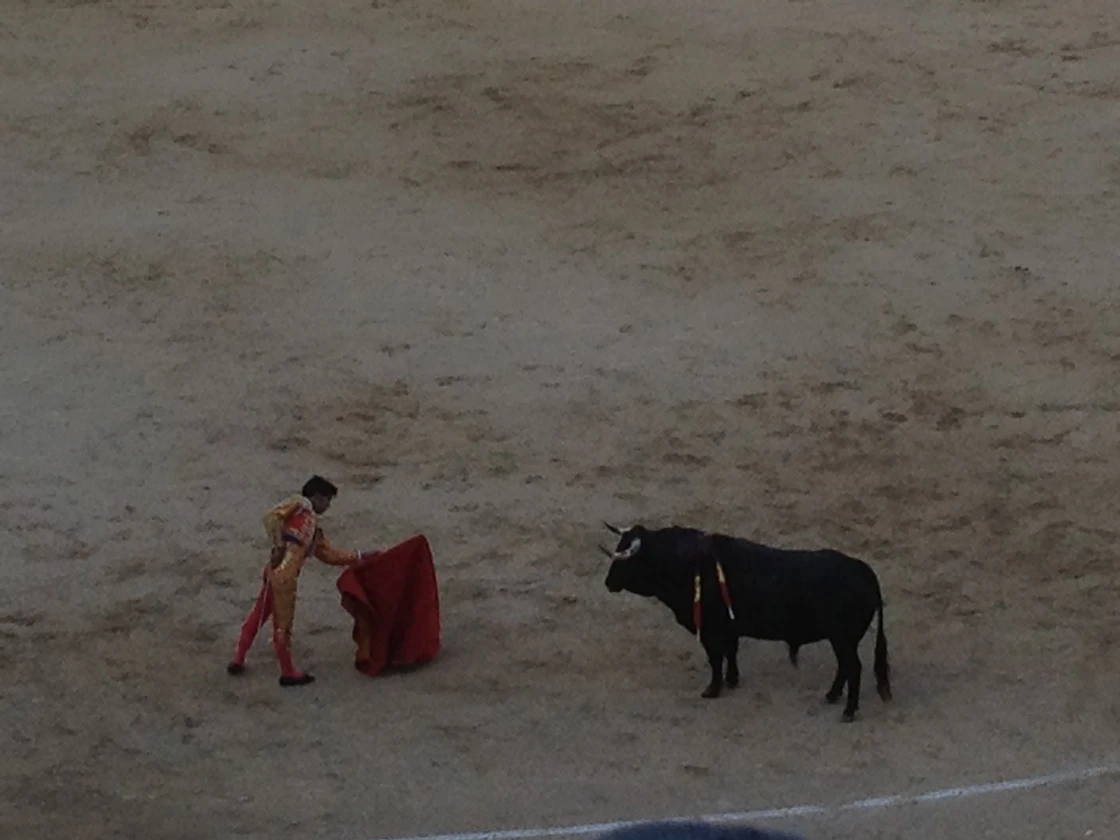
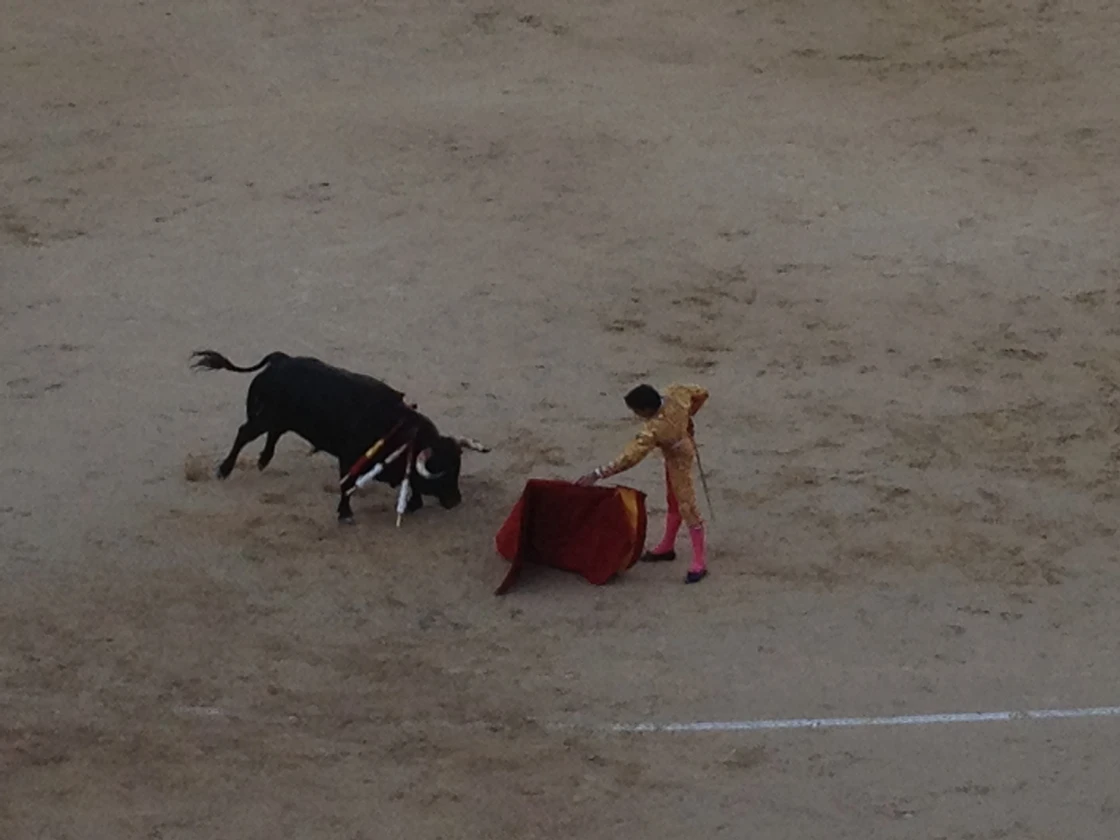
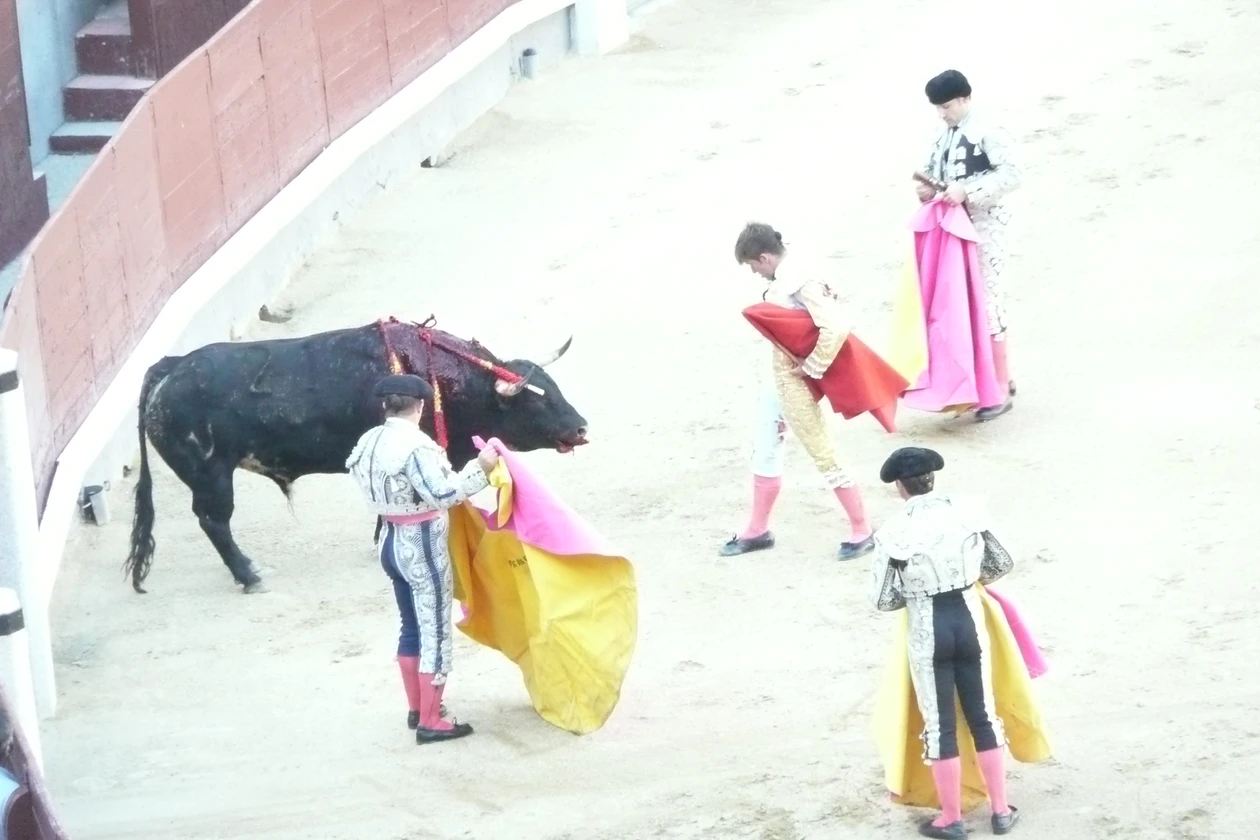
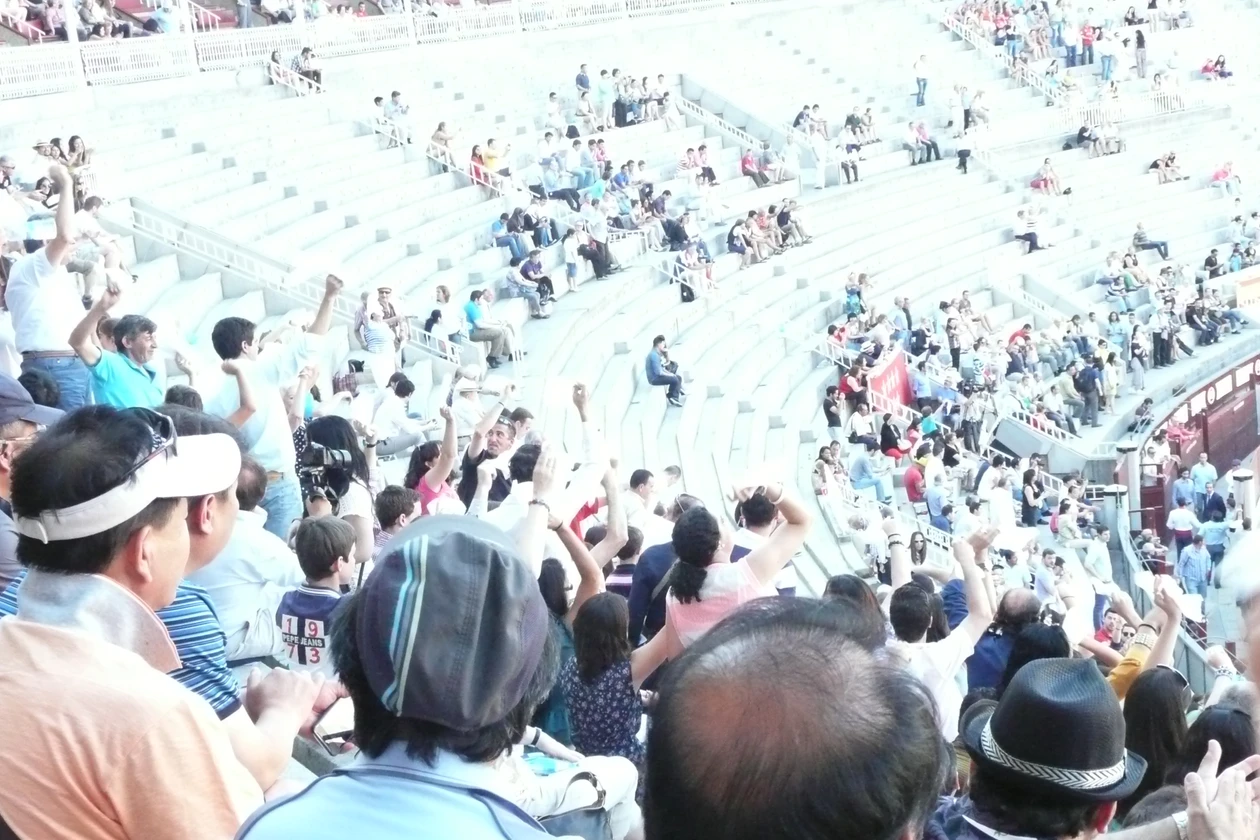
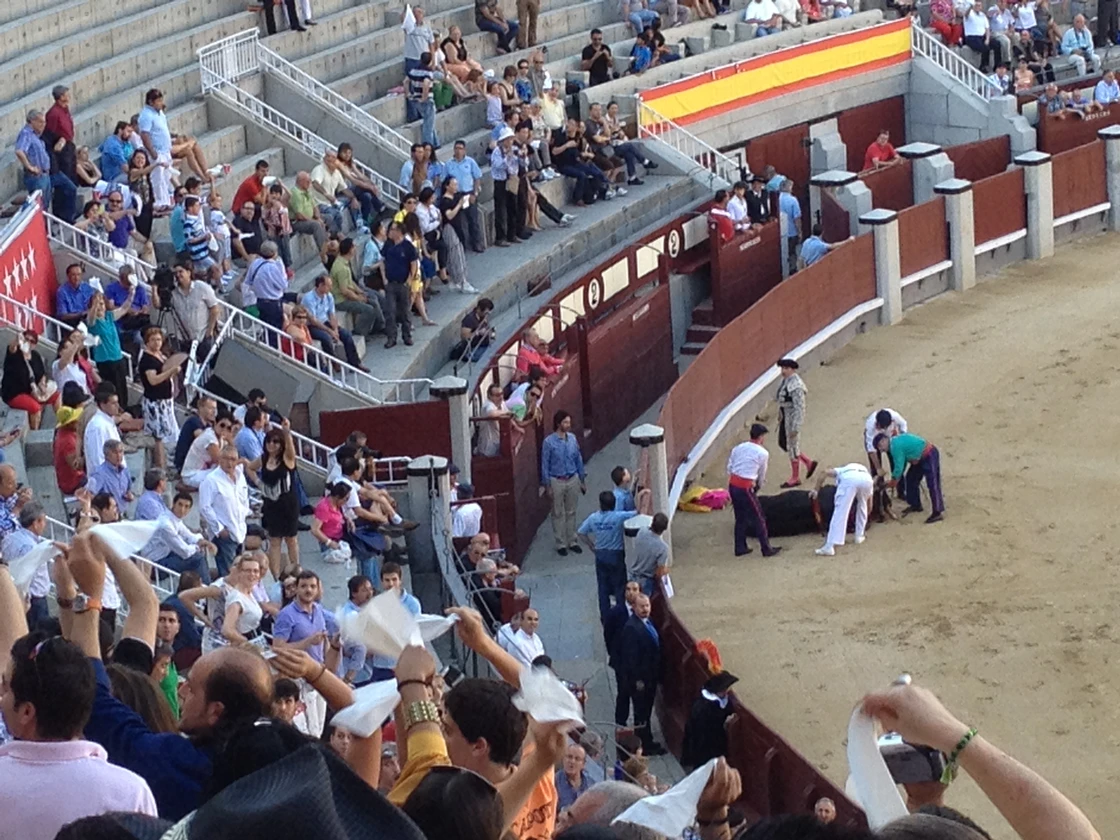
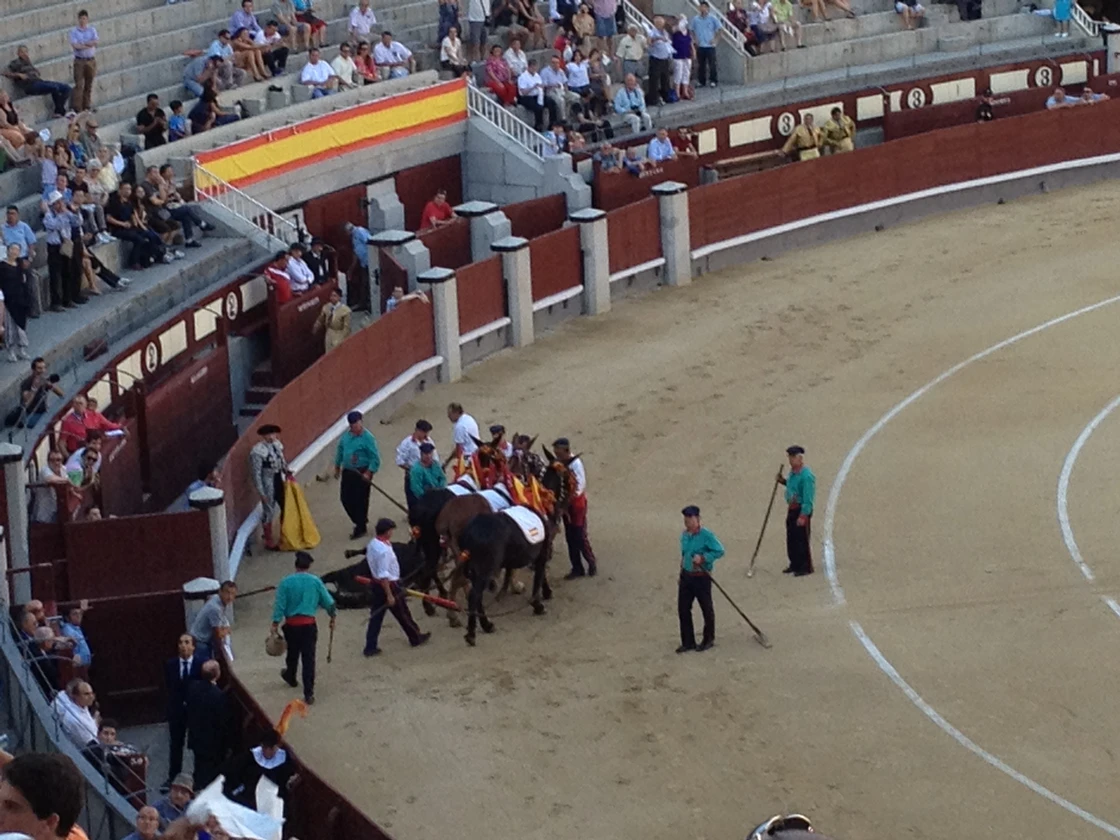
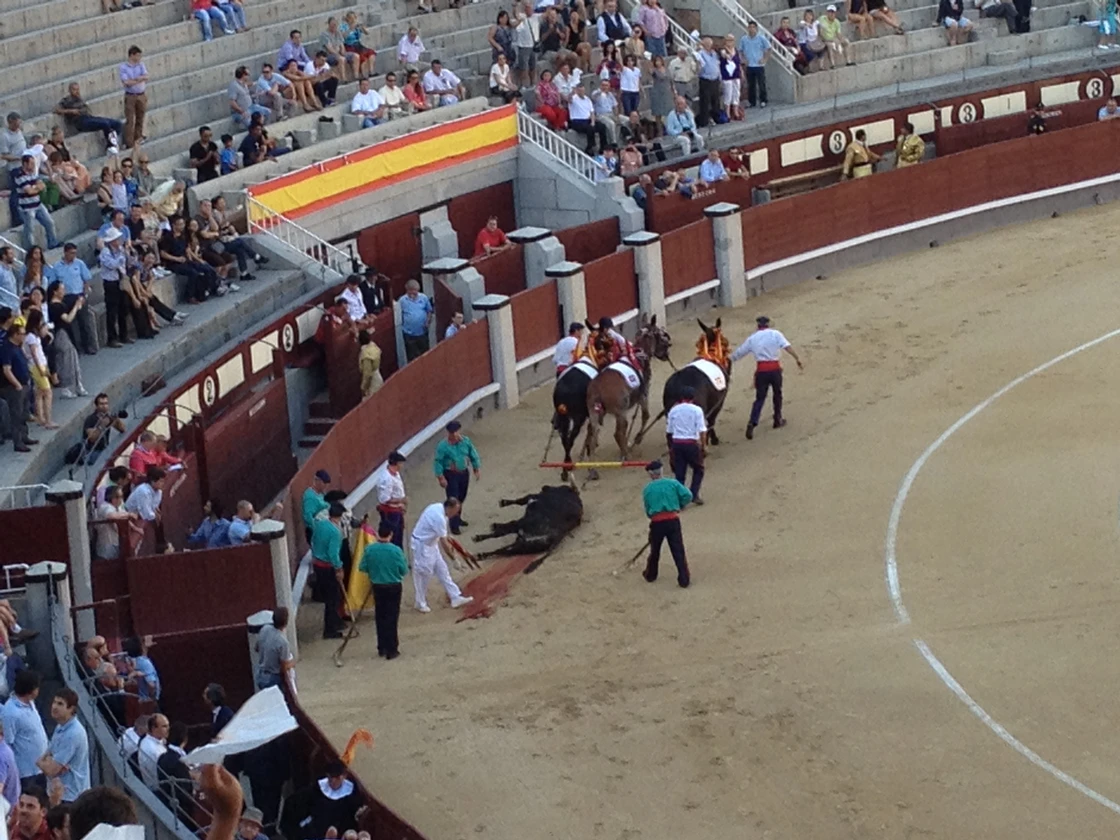
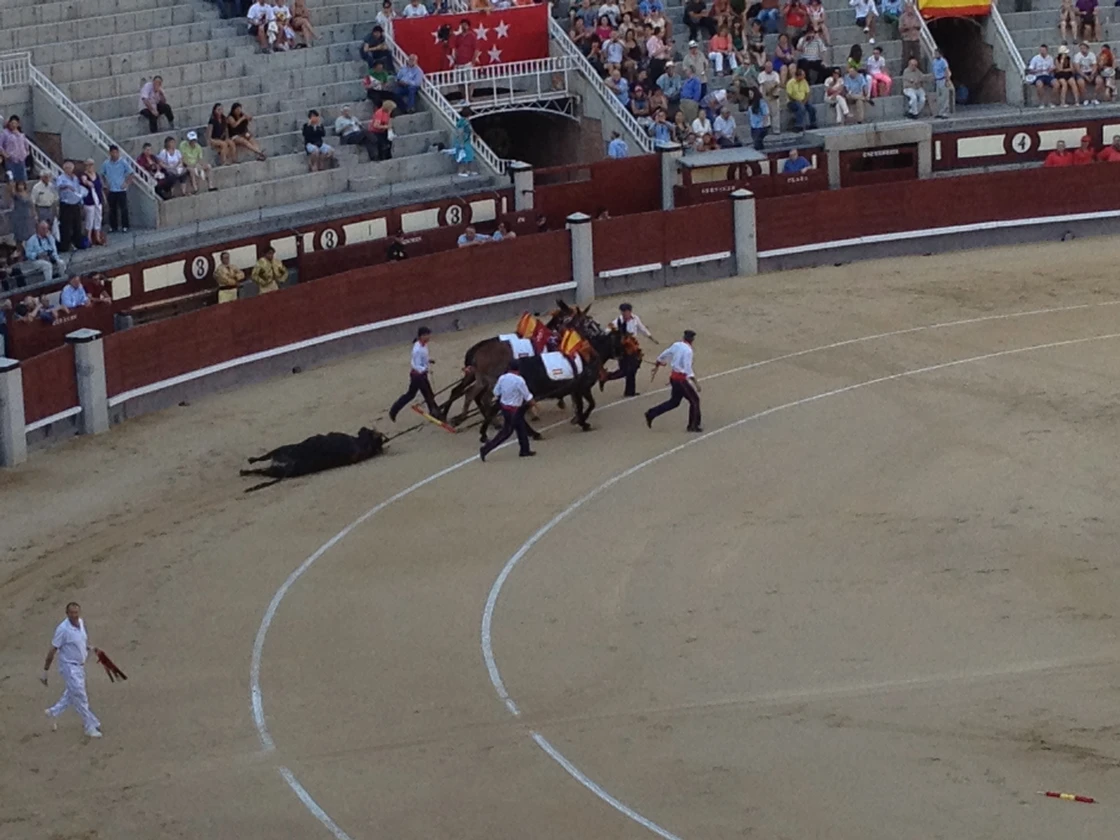
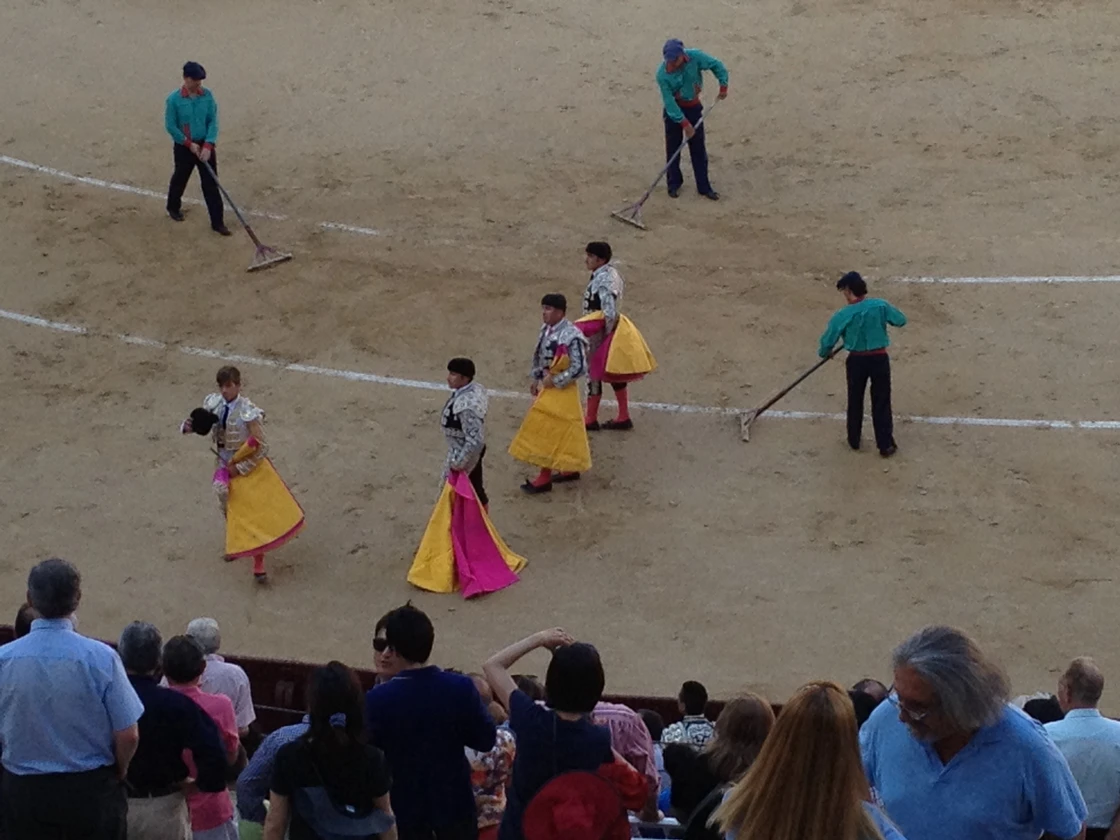
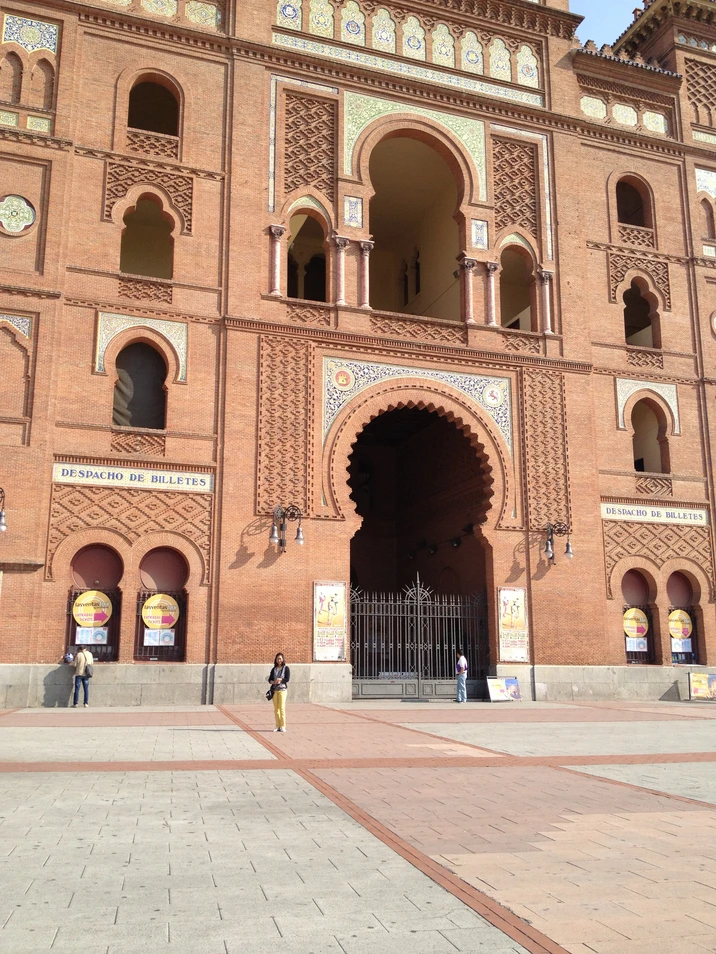
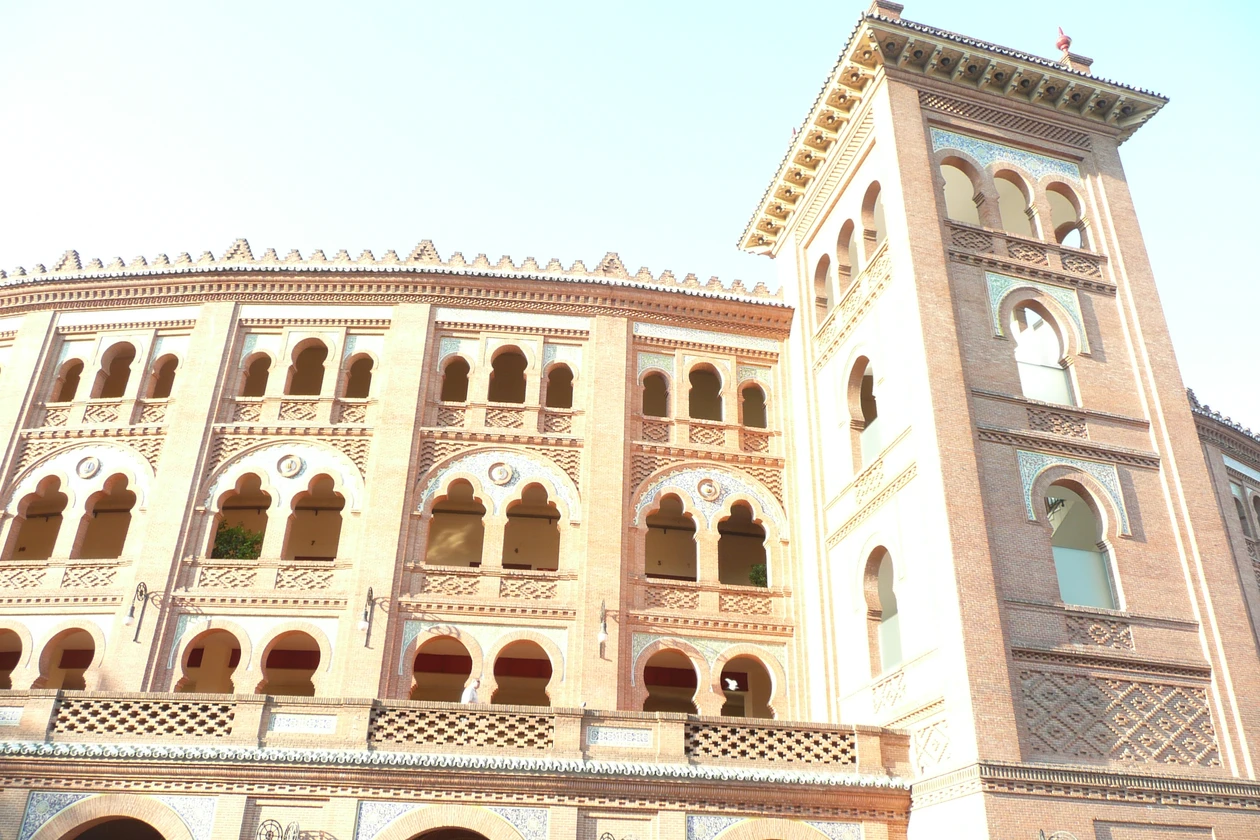
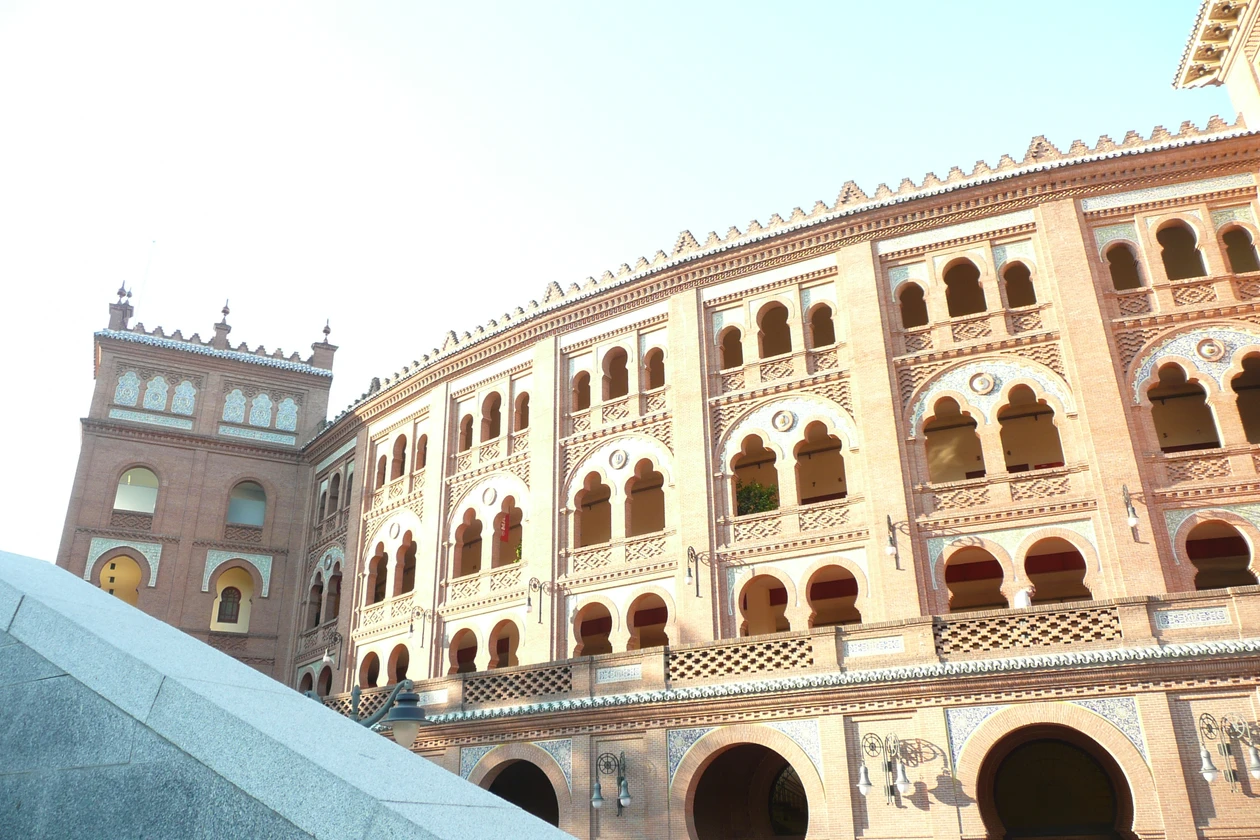
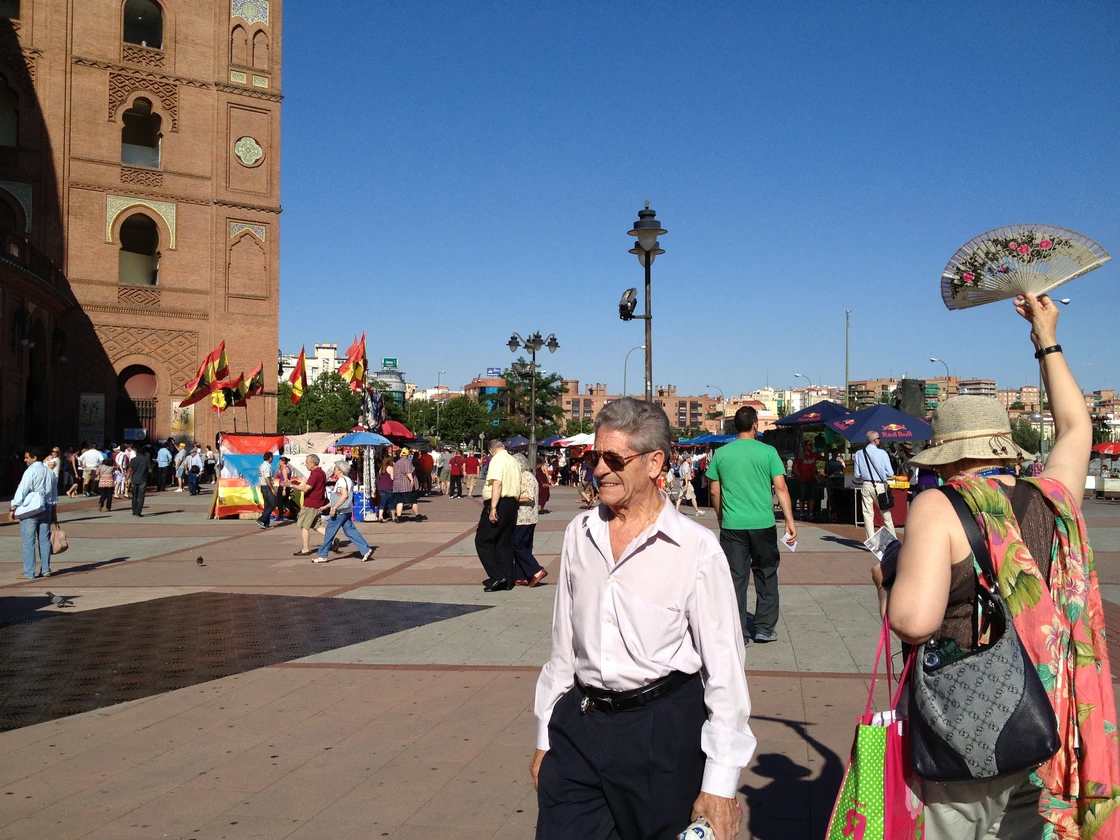
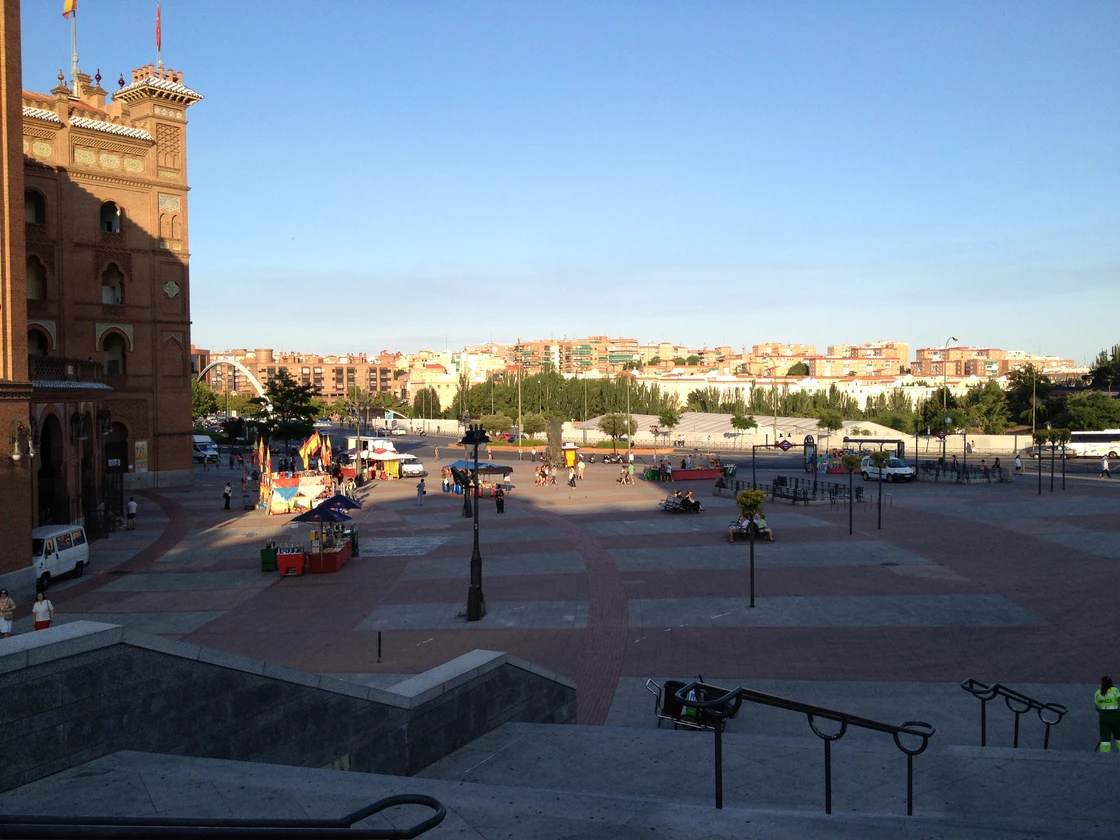
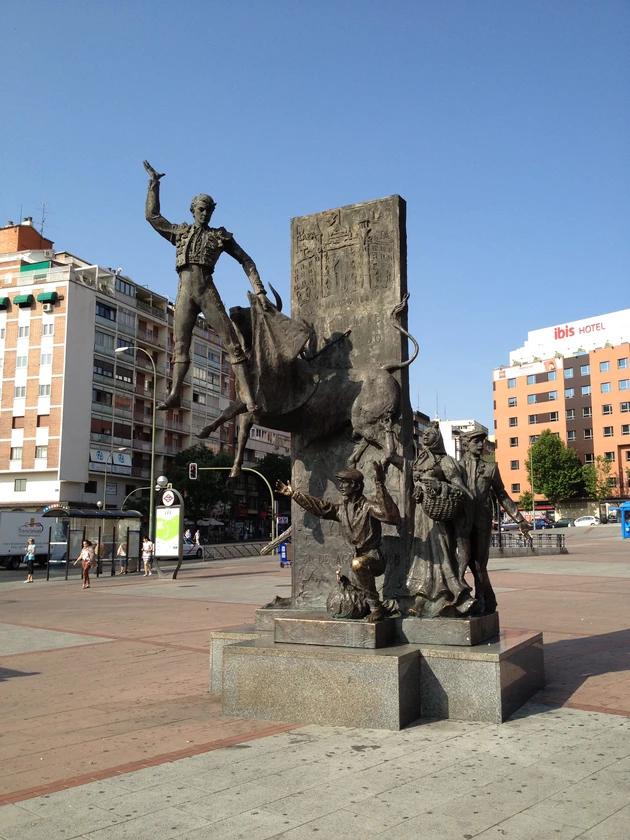
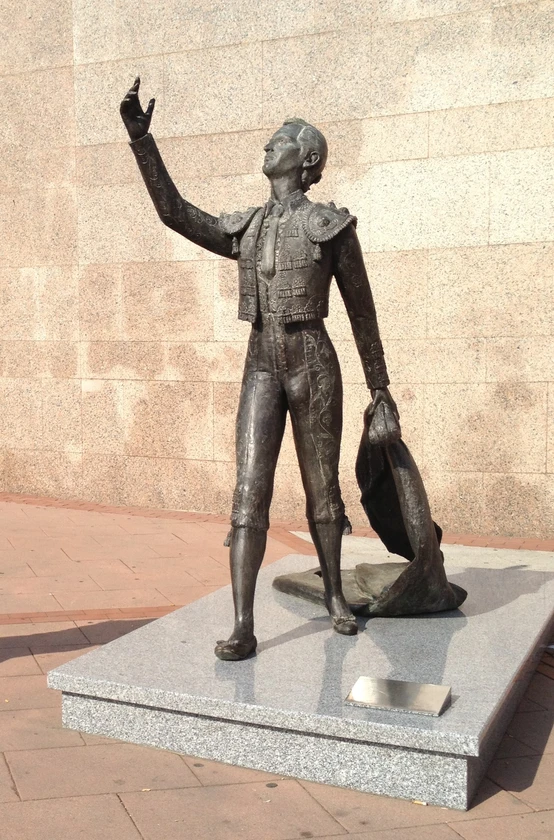
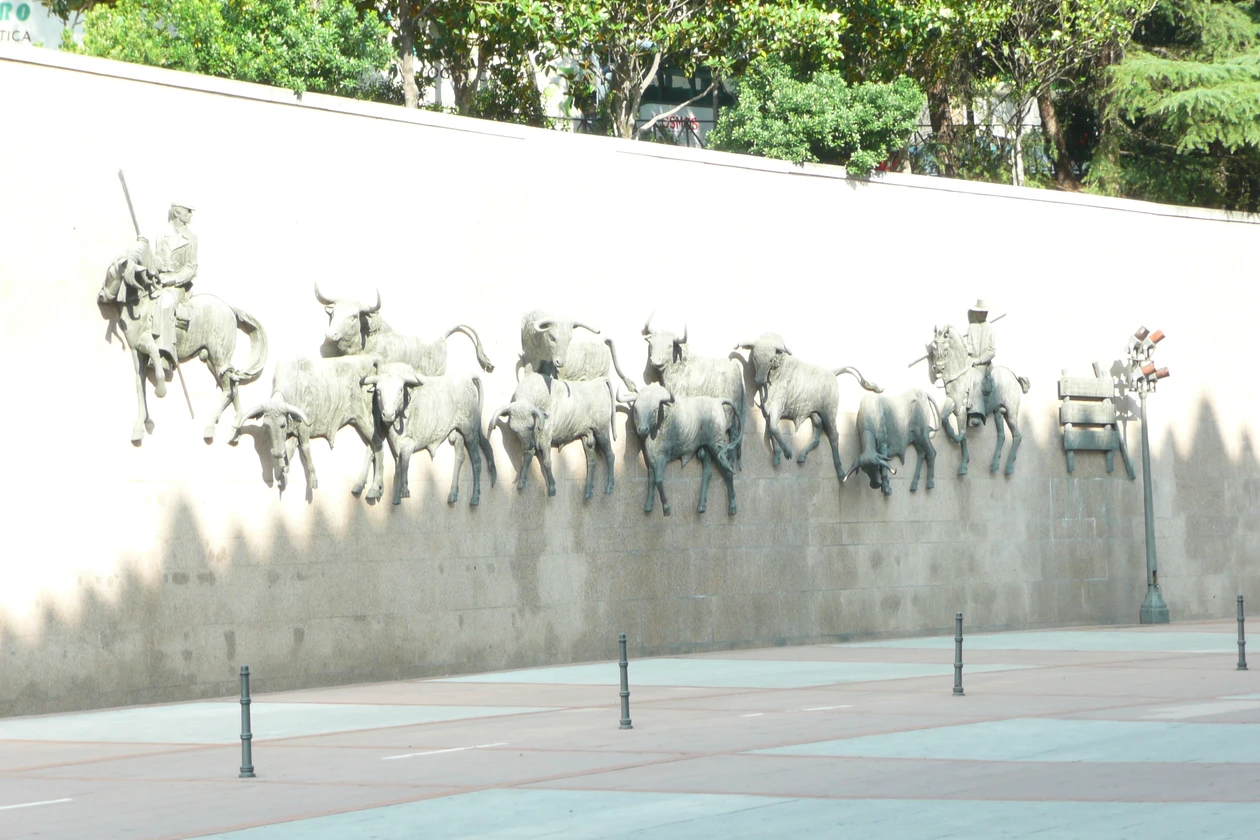


Comentários